#adding in baroque works in that early
Explore tagged Tumblr posts
Text
i’ve watched the first opla episode and i must say: AAAAAAAAAAAAAAAAAAAAAAAAAAAAAAA
#IT WAS SO GOOOOOOOD#spoilers in tags#the pilot’s log#opla#the amount of adrenaline i was feeling was insane which is how i know a show is good#EVERYONE WAS SO NEW#baby zoro and baby nami being all mean and growly <3#god. it was so different and i love that#adding in baroque works in that early#the og trio teaming up first ep#GARP!!#and the vibes were so different but so very good#like it’s one piece but new and different and exciting#just like i thought#and that mean there’s so much to look forward cuz it’s like! how are they gonna do that?#who are they gonna introduce when? what’ll get combined and twisted into something new and fresh??#i’ve already heard that syrup is very different and i’m very excited for it#tho alas i am watching with my family#which is fun but it means i can’t binge the whole thing at once#i won’t get to watch another ep until saturday probably :(#but good news: my mom did like it!#anyway i have art to post
24 notes
·
View notes
Text
My Fair Lady: Alexandrine 1820's Dress

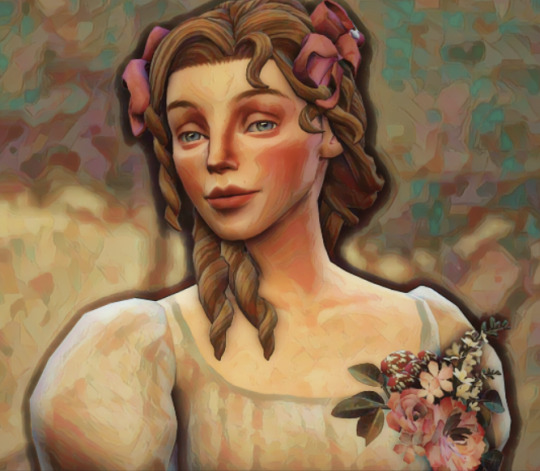
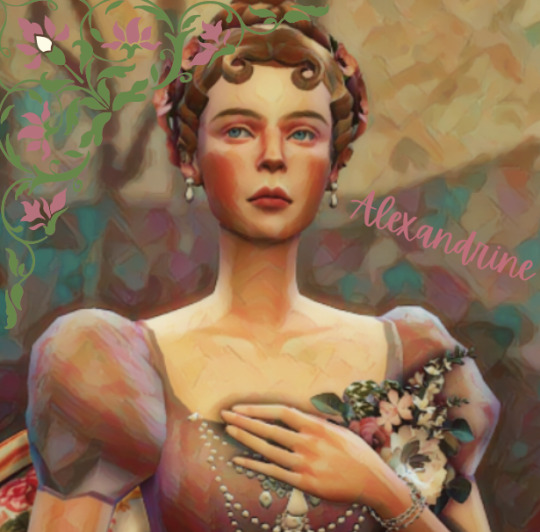
Alexandrine, an early 1820's Dress for your regency ladies.
I've decided for every set or series of dresses I make they'll be a part of a collection called 'My Fair Lady'. I will release more dresses and sets from different eras in the future : ) I have a late baroque big set that'll be coming towards the end of the month.
This is a frankenmesh of a dress from @peebsplays & @historicalsimslife
BGC, with multiple swatches
I'd like to add that the dress comes plain without any flowers or added jewels. I used flowers and jewels from @acanthus-sims @royaltysimblr and @batsfromwesteros

Now I say it's 1820s as the silhouette aligns more with the silhouette of the years 1820-1822 but in reality, this could work from about 1817-1823
Pics of dresses from my Pinterest board from 1817-1823 : )
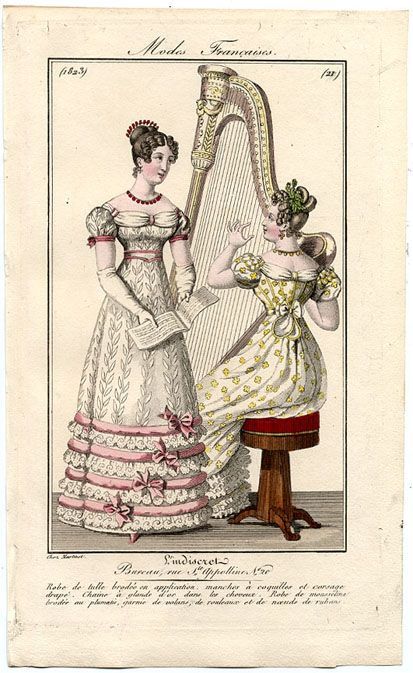
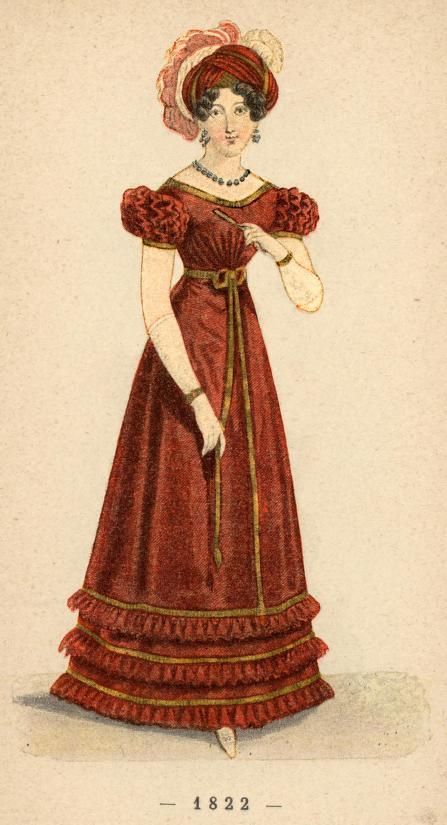
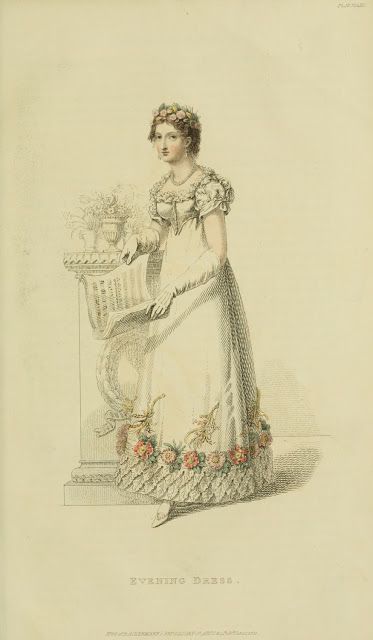

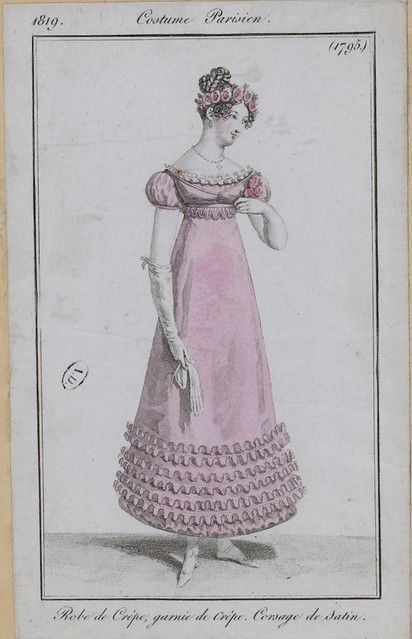
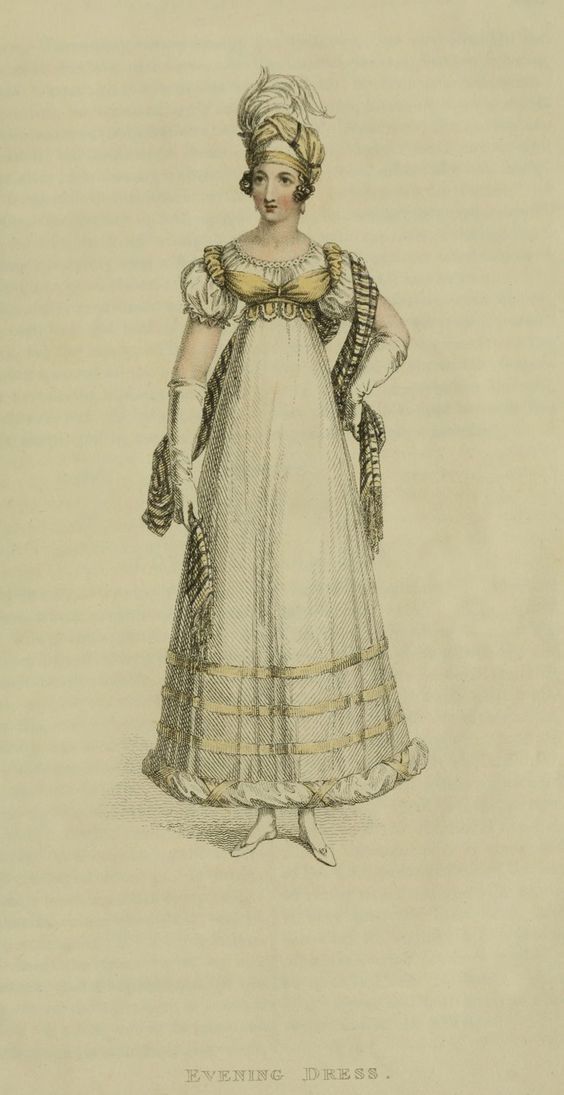
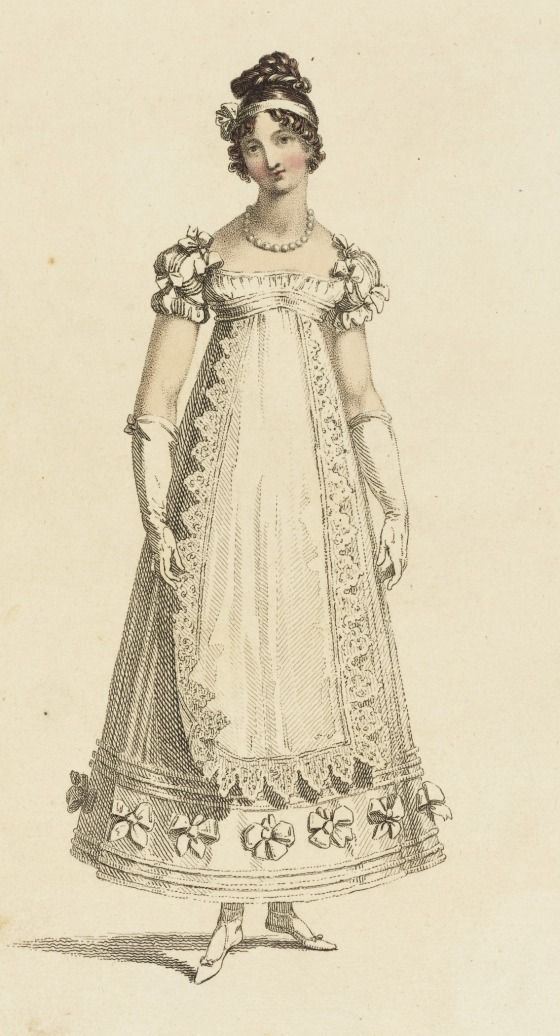
DOWNLOAD
#ts4 regency#sims 4 regency#regency sims 4#sims 4 historical#simblr#sims 4 regency era#historical sims 4#historical cc#my cc#regency ts4#historical sims
417 notes
·
View notes
Note
To be somewhat fair to OPLA, I don’t think the issues with the structural and story issues of the season can be entirely chalked up to “execs gonna exec.” A lot of it feels like it’s because the standard formula for live action television just feels fundamentally incompatible with the thing they were adapting. Live action tv’s comfort zone can be summed up as two people sitting in a room commenting on the plot, and then every 10-15 minutes the action (or “action” depending on the genre) happens. Which is a format that has made for some truly great, critically acclaimed television, but is fundamentally at odds with action-adventure/roadtrip format of One Piece. Between the inclusion of Garp and weird structural issues like characters randomly vanishing or plot points being immediately resolved/dropped, it feels like the live action adaptation is dragging its source material kicking and screaming into fitting that structure.
Season 1 was always going to be a little weird because they were going to have to make an overarching narrative where one did not initially exist in the manga. TV shows almost always utilize an A and a B plot story structure, so the marines were slotted into that B story arc role. This worked pretty good for Coby and Helmeppo, with the added bonus of them being able to adapt their cover story, but the Garp material was bad and the pacing of these scenes was also bad. However, I think it’s important to note that characters sitting around in an office set that can be reused for multiple episodes (or a set like Baratie that was already built) is cheaper than the island jumping the Straw Hats were doing. It was an efficient use of the budget for Garp to be the B plot, even if it mangled his character. This is and will continue to be something the live action will have to fight against for as long as it exists, so I would say get used to characters sitting around indoor sets talking. Otherwise an already ridiculously expensive series would just get exponentially more expensive.
TV shows also typically use mid season twists to help drive the narrative towards their second half, and as much as it pains me to say it, revealing Garp is Luffy’s grandpa early makes for a really good mid season twist. It recontextualizes everything that came before it and sets up a compelling drama for the episodes that come after. I’d have no problem with this, except, again, Garp was written really, really poorly.
The Alabasta saga has none of these problems. There is a natural marine B plot with Smoker and Tashigi that already exists in the manga with them spending a lot of time talking in offices (Crocodile also spends a lot of time hiding in an office so bonus points there, although if they are going to CGI some giant bananadiles that’d be expensive). There is an overarching narrative already written where one did not exist in the East Blue. And there is a compelling mid season twist in revealing Vivi is a princess. But by splitting the saga the live action is now going to have to come up with a narrative arc ending for the season where one does not exist in the manga, creating almost the opposite problem of season 1. Wapol as he is in the manga does not make for a compelling end of season villain like Arlong does, and I suspect that they’re going to turn Mr. 3 into that role instead just based on who they cast.
Now, while I think the live action did a good job capturing the Straw Hats, the blistering pace for season 1 meant that very few of the side characters that are so important to the manga got time to breathe, or really even exist (rip Gin), and slowing down the pace will help alleviate that flaw. The giants on Little Garden will have time to shine. Zoro vs 100 Baroque Works agents will have time to exist. The live action onlys will get it cry over a giant whale.
But dammit all, I want to have my cake and eat it too. Give me 10 episode seasons when the material calls for it, and give shorter sagas like Skypiea shorter seasons. Take the time to adapt the story that’s already there in the form that makes the most sense instead of Frankenstein’s Monstering one of the best selling comics of all time into the format a bunch of suits insist upon because of algorithm bullshit. Just let a good story be told well and the people will watch it, just as much as they watched season 1.
The sad thing is that season 1’s success proves to the suits with algorithms that 8 episodes is the way to go. If it had been less popular the solution would have been cancellation instead of fixing the pacing, and that’s why thinking too much about the state of modern TV depresses me.
68 notes
·
View notes
Text

Dayspring Kisses

For @judejazza's 300 follower event, An Invitation to Crown. If you haven't seen them, her works are fantastic! Please check her out!
Banners/dividers made by @natimiles. She's also a fantastic creator!

Words: 427 CW: Canon-Typical references | SFW Pairing: Ellis Twilight / Reader (unnamed, female pronouns) Posted on Ao3 here!

Early morning sunlight streamed through the large, baroque windows, bathing the room in an ethereal glow. The sound of birdsong broke through the comfortable silence of the night. Ellis’ eyes opened slowly. He blinked once; twice; then focused his gaze on the figure laying half on him in bed.
She was still asleep. Her legs were entwined with his, her hair splayed across the pillow and his shoulder like a halo. She lay facing away from the windows; the dawn’s rays almost adding an air of divinity. His breath caught in his lungs seeing her like this.
She really was pure. At least, for the most part anyway. Just a normal girl, a sweet robin, which had found herself amongst a den of wolves. And she was his, and only his, to possess and taint. The thought nearly made him giddy. She was his. Everything about her, from the first time he met her, until her very last breath and everything else in between, was completely and utterly his.
Pleased with the thought, he continued to survey her. Her chest steadily rose and fell, her breath gently tickling his neck. Truly, he could watch her for hours and not grow bored. The arm securely holding her against his chest drew mindless patterns on the smooth skin of her back.
Suddenly, her brow furrowed, as though having an unpleasant dream. Well, that certainly wouldn’t do.
Ellis reached out a hand and gently brushed a strand of hair out of her face before using his thumb to softly massage the wrinkle from her forehead. Her face relaxed back into sleep at his touch, bringing a content smile to Ellis’ lips. There were many things he enjoyed doing, but none more so than making his love blissfully happy.
Soon after, her face scrunched and she blearily opened her eyes, meeting Ellis’ dark gaze in the morning light. Ellis adored her always, regardless of how she looked, but he certainly held a fondness for the beautiful smile she gave him when she awoke. His touch leisurely glided up to her shoulder, down her arm, and to the hand that rested overtop his heart. Ellis took her hand in his as he always did and laced them together. Her fingers fit perfectly betwixt his, as if they were the final pieces of a jigsaw puzzle. He brought her knuckles to his lips and pressed a kiss to them.
“Are you happy?” he asked, eyes twinkling brightly. “Not as happy as I will be tomorrow,” she replied, meeting him for a sweet kiss.
58 notes
·
View notes
Text
LOVE GUIDE (SAY YES) chap12

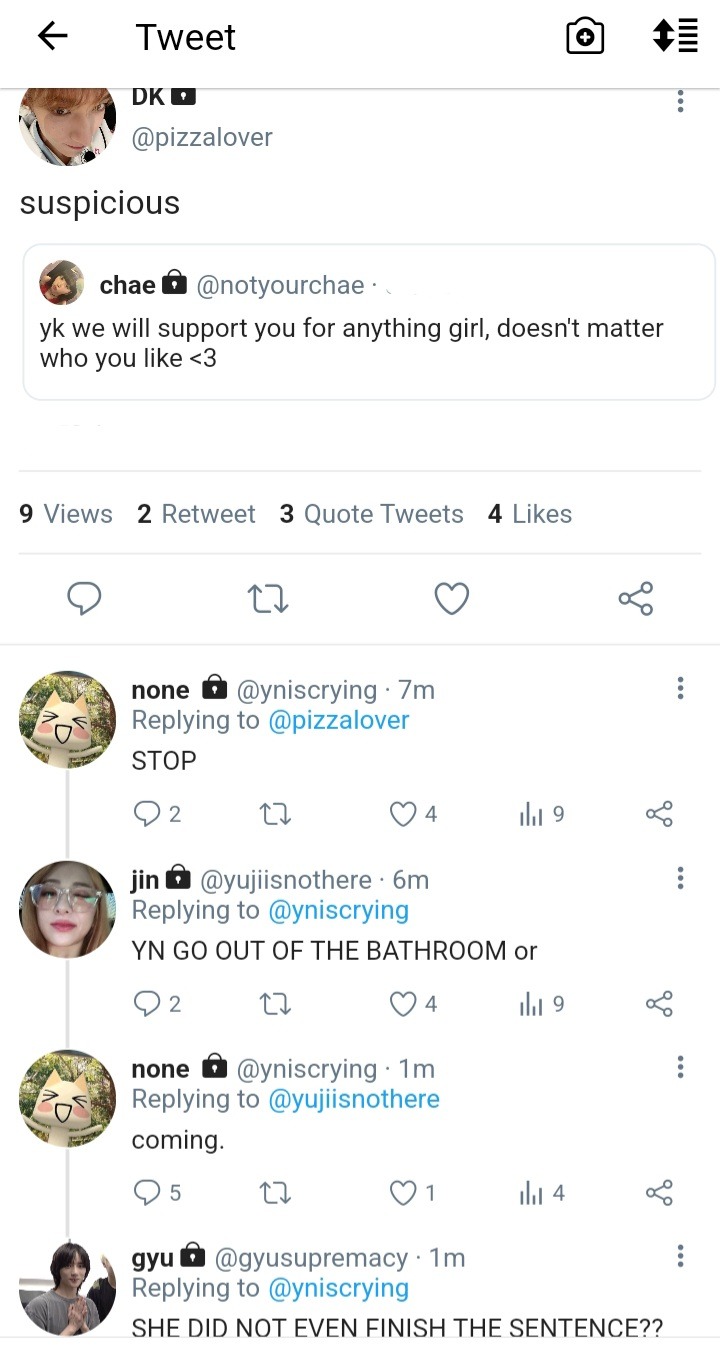
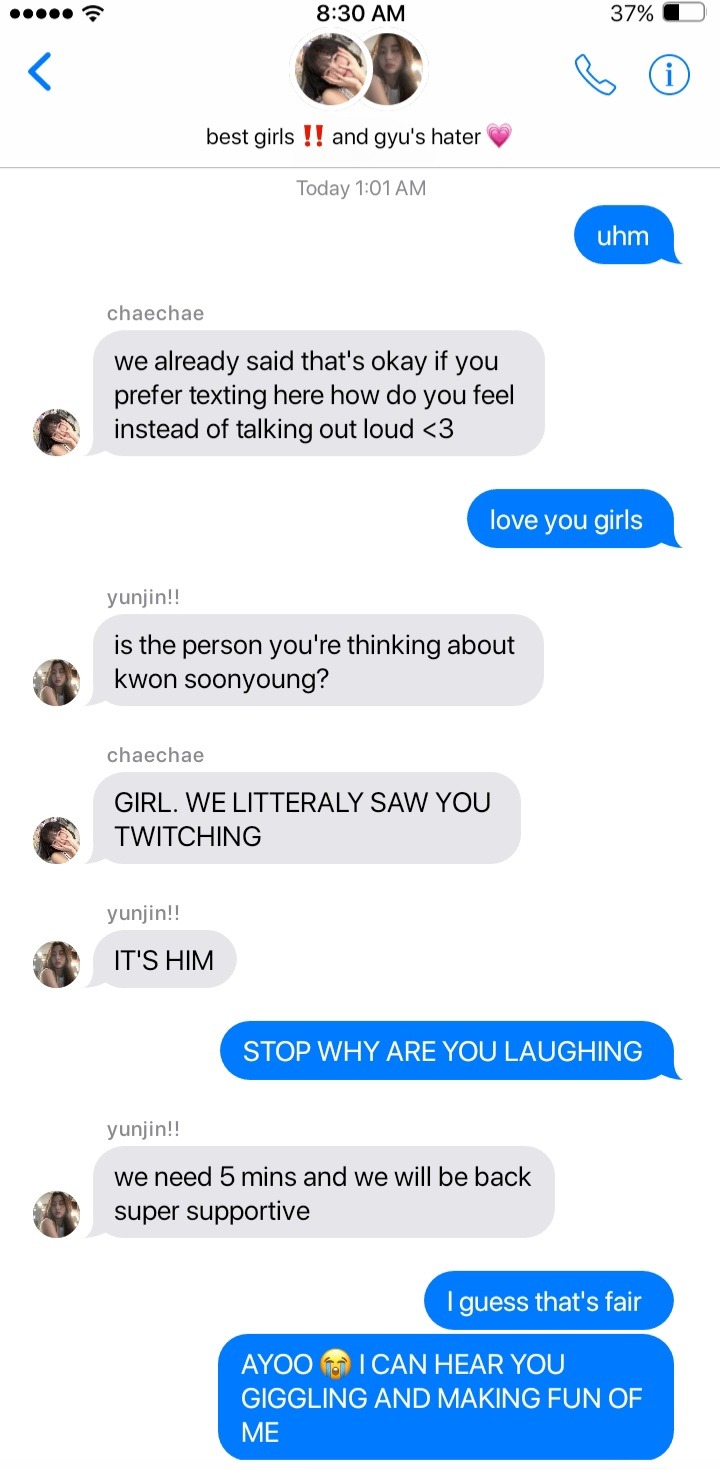
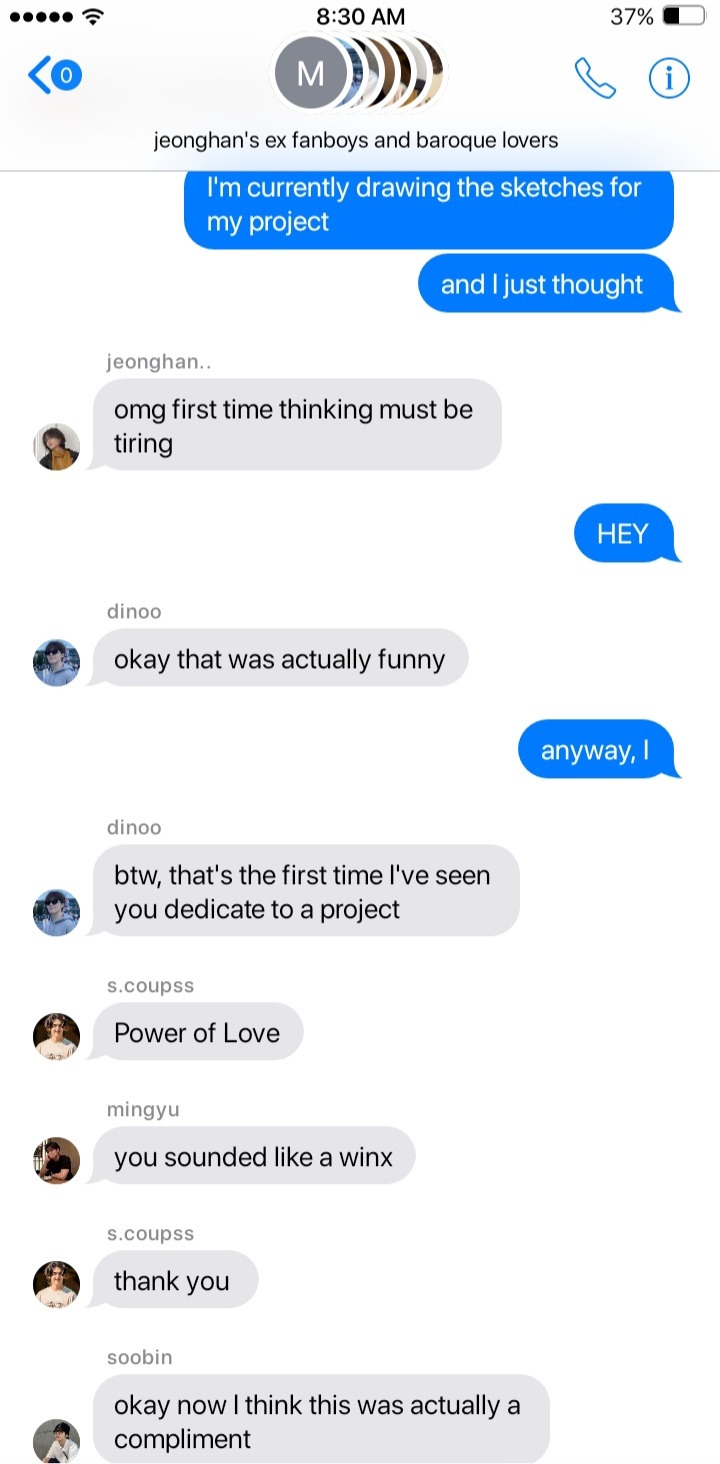
yunjin and chaewon were waiting for you to speak, as you sat outside the bathroom door in complete silence. you could even hear your breathing and your heart beating so fast?
on that night, you finally admitted to yourself, and to your best friends that kwon soonyoung was more than just a project partner…
indeed, during the time you spent with him, you noticed that your heart might have skipped a few beats (let's not forget that he fainted after receiving your gifts) and that every time you told him something, he made an extreme effort not to stare mesmerized at your moving lips.
also you could always feel your real happiness when you texted each other at night, and when you couldn't stop laughing together.
your conversations were at ease, and in that short time, you discovered numerous similarities between you two - you understood that he had no idea what "baroque" was; you were similar in many ways, not all.
again, it was during that night that you admitted to your friends that you had let him pretend to be an expert in that art movement just so that you could observe him trying to pronounce the correct name, and show his "deep knowledge" in the days to follow.
you also planned to show your gratitude to him in an indirect way. you were ready to suggest that he also use the concept of animals, keeping in a sketch the tiger's striatum as the main theme (when you had first met, the third thing after his name and a failed pick-up line had been that he loved tigers).
his ability to make you smile and blush had touched your heart, which you had worked so hard to keep safe for fear of the awful consequences. you were afraid that opening yourself to love would end up in a lonely frigid cold; nevertheless, he was able to make you feel a comfortable warmth that seemed endless.
"is this "falling in love"? am I now ready and willing to change myself to be loved? to let the old me die to be reborn and achieve the completeness given by love? should I then take this step, trusting the only way to fully live is to love?"
you had spoken those words all in one breath. so fast that your friends were still looking confused in the first few minutes, they were still trying to understand exactly what you had said.
"All right! I'm thankful you said it out loud girl… you seem to be questioning your existence. However, I can tell you based on my little experience that yes, this is this love," yunjin said.
"that's where you overthink must come from." chaewon added.
they both appeared calm, and such a reassuring smile - you could sense the unconditional love in their gaze.
"anyway…it is not that serious, right?" you uttered, a little afraid of ruining the moment.
you three started laughing and nodding, and rather, the tension in the room dissipated. your anxiety at openly declaring that you liked Hoshi faded, and instead, it was finally starting to give you that satisfying rush of nervousness. the faint thrill you get in the early stages of a crush, when your hopes are as high as the mountains and the sun, a metaphor for love, gets to embrace you close.
"I like him. I like Hoshi."
you instantly chuckled as the girls drew near to you, and hugged you while wearing mock-surprised expressions; many of your worries from the previous few weeks also suddenly disappeared.
it was already late at night, and you were too tired to even consider the possible consequences of a relationship between you and your crush. before the final project, you would have spent many days together, so there was plenty of time for everything to work out, right?
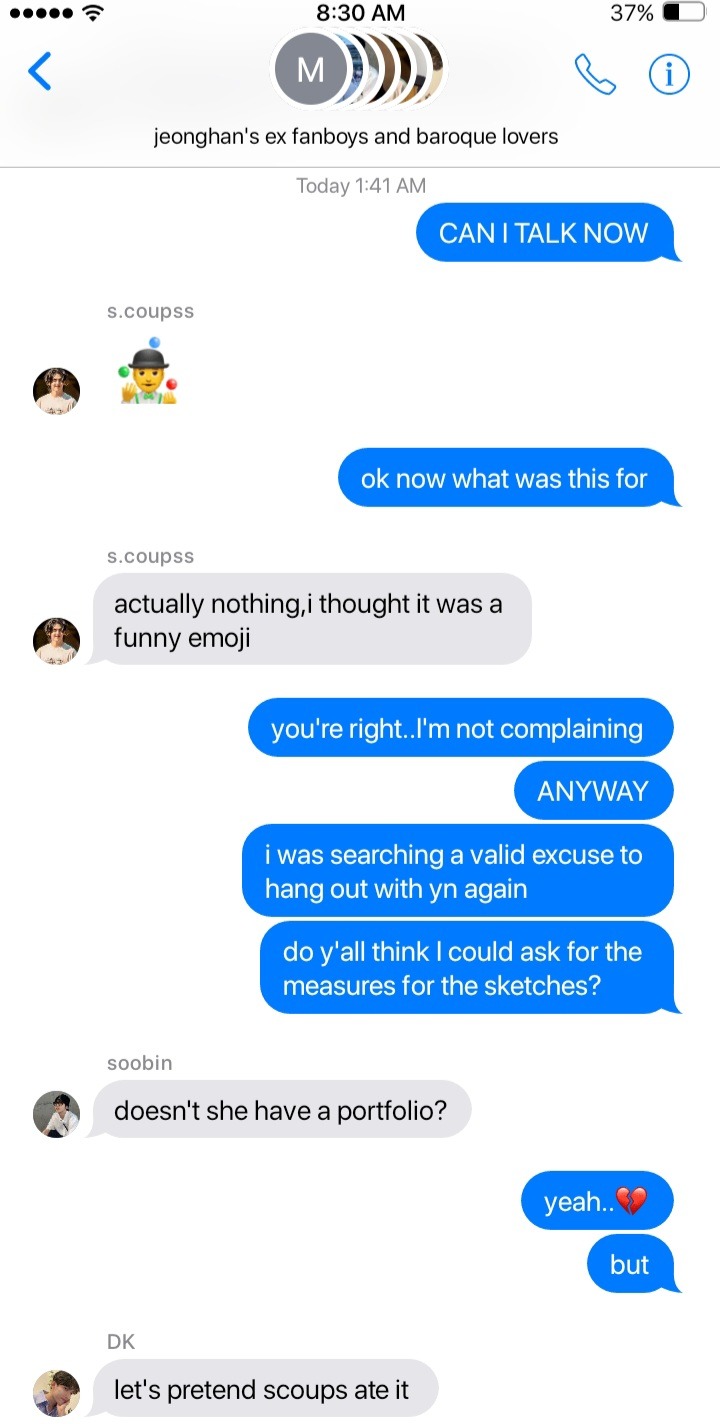

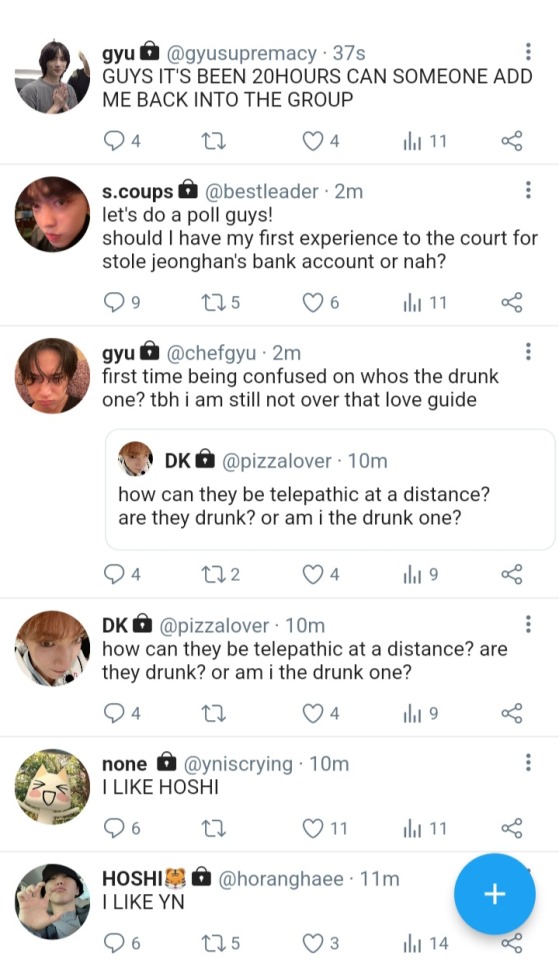
chap11 // chap13 ; m.list
。 ✧ ⁺ 。
summary: It is clear to everyone that Kwon Soon-young has a huge crush on the model student Yn. But can Hoshi, a passionate and funny stylist make her fall in love in just a month? What if he followed a weird LOVE GUIDE, that he found in the school bathroom?
。 ✧ ⁺ 。
a.n. HII after a rlly long break i am back!! hope y'all missed a bit this funny smau, and i hope you will like this chapter. we are slowly reaching the end, but i promise there's still a funny plot twist who's waiting for our protagonists,, (text + 0.6k wc)
taglist(33/50): @alsktudy @kissesfrmwonwoo @marsstarxhwa @haohyo @wonwooz1 @wonwoos-wineparty @mhlsymlysn @nishloves @punkhazardlaw @manooffline @kflixnet @minhui896 @azkahanif @woozixo
@chimmy-bts @luvhuihui @wonraiwoo @keeboismine @teenyfinds @ninetiesbitches @astro-doll-the-star @bangantokchy @meowwyoong @dahbee8 @ivehypnosis @chweverni @miriamxsworld @cottoncheol @caratboy
@gigiiiiislife @isabellah29 @forrhoshi
send an ask or comment under THIS post to be part of it !!
#love guide (say yes)#k labels#seventeen#seventeen x reader#hoshi#hoshi smau#hoshi fluff#hoshi svt#hoshi seventeen#hoshi x reader#hoshi scenario#seventeen hoshi#seventeen smau#svt#svt smau#kwon soonyoung smau#kwon soonyoung fluff#kwon soonyoung x reader#kwon soonyoung#kwon hoshi#svt funny#svt fic#svt scenarios#svt hoshi#hoshi x yn
54 notes
·
View notes
Note
enemies to lovers with sean? 🫶🫶
I am going to be really honest this was fucking hard. I love enemies to lovers but it is so difficult to really bring out the tension in a short drabble like this. But still thank you so so much for the req and I hope you like what I did here :)

Canvas of Conflicts
The sun hung low over the Seattle skyline, casting long shadows through the windows of the art department at Blackwell University. Sean Diaz stood in front of a large canvas, his hands stained with a mix of acrylics. He was deep in his zone, creating a piece that blended surrealism with street art—a signature of his evolving style.
Across the room, you sat hunched over your laptop, typing furiously. Your focus was on an in-depth analysis of Baroque art for your Art History presentation. The sharp clacking of keys was the only sound that could rival the scratch of Sean's brush on the canvas.
The class was a melting pot of creative minds, and your professor often encouraged debates. But when it came to you and Sean, these debates often turned into heated arguments.
“Diaz, you can't just slap some paint on a canvas and call it art,” you snapped, glancing up from your screen. “There's no substance, no historical context!”
Sean paused, turning to face you with a smirk. “And you can't just analyze art to death, Y/N. Sometimes it's about feeling, not just thinking.”
The tension between you two was palpable, sparking almost every class. It wasn't just a clash of specializations—it was personal. You both carried an undercurrent of competition that bled into every interaction, whether it was a classroom debate or a chance encounter at a campus party.
One evening, the head of the department, Professor Henderson, called both of you into her office. Her stern expression was enough to make you both fall silent.
“I’m assigning you two to work together on the upcoming art exhibition,” she announced, her tone leaving no room for argument. “Your task is to combine your skills—Sean’s fine art and Y/N’s historical analysis—to create a cohesive presentation. I expect nothing less than excellence.”
The news hit like a bombshell. As you exited her office, you and Sean exchanged a look of mutual disbelief and dread.
“Great,” Sean muttered sarcastically. “Just what I needed.”
“Trust me, the feeling is mutual,” you replied, rolling your eyes.
The next few days were filled with awkward meetings and forced politeness as you brainstormed ideas. It was clear neither of you were thrilled about the partnership. However, as the deadline loomed, the gravity of the task began to sink in.
One late night in the studio, surrounded by sketches and notes, a breakthrough finally came. Sean was experimenting with a new technique, layering colors in a way that seemed chaotic yet intentional. You watched, intrigued despite yourself.
“Try using a bit of chiaroscuro,” you suggested cautiously, stepping closer. “It might help highlight the depth.”
To your surprise, Sean didn’t snap back. Instead, he nodded, adding a darker hue to the canvas. The effect was immediate, adding a new dimension to his work.
“Not bad, Y/N,” he admitted, a hint of admiration in his voice.
You smiled slightly, feeling the ice between you begin to thaw. “Thanks. And I have to admit, your work has a certain raw energy that’s hard to ignore.”
As nights turned into early mornings, the studio became a place of shared ideas and mutual respect. You found yourself laughing at Sean’s jokes, and he began to listen to your critiques without defensiveness. The friction that once defined your interactions gave way to a synergy that neither of you had anticipated.
One night, as you both sat on the floor amidst scattered sketches, Sean handed you a cup of coffee. “You know, I’ve been thinking,” he said, his tone unusually serious. “Maybe we’re not so different after all. We both want to understand art, just in our own ways.”
You nodded, meeting his gaze. “Yeah, I guess we do. And maybe… just maybe, we can learn from each other.”
The final days before the exhibition were a blur of activity. You and Sean worked tirelessly, fine-tuning every detail. The end result was a stunning fusion of artistic expression and historical context, each element enhancing the other.
On the night of the exhibition, as you stood side by side in front of your collaborative masterpiece, the applause from the crowd felt like a distant echo. You turned to Sean, your heart pounding.
“We did it,” you whispered, a smile spreading across your face.
Sean’s eyes softened as he looked at you. “Yeah, we did.”
In that moment, the competitive tension that had defined your relationship melted away, replaced by something warmer, something more profound. As the evening wore on, you found yourselves gravitating closer, the unspoken feelings finally surfacing.
Later, as you walked together under the soft glow of the campus lights, Sean reached for your hand. “You know, Y/N, I’ve grown to really appreciate your perspective. And… well, I’ve grown to appreciate you.”
You squeezed his hand, your heart swelling with affection. “Same here, Sean.”
And as the night enveloped you both, the journey from rivals to partners, and finally to something more, felt like the most beautiful piece of art either of you had ever created.
#life is strange 2#sean diaz#lis2#lis2 sean#lis2 sean diaz#sean diaz x reader#enemies to friends to lovers#enemies to lovers#enemies to friends trope#lis2 headcanons
29 notes
·
View notes
Note
Im gonna need your like, whole musical rec list, bc literally every song you have posted has not flopped once, give me your faves i need to eat them
OUGHHH YOUVE UNLOCKED THE BEAST ARGSHHFHJDF....
in the interest of making this both easily accessible but not stretching the dashboard, im embedding bandcamp links when i can, otherwise linking to youtube when unavailable
in no particular order, inclusion based mostly on what im still actively into LMAO but also just things you should give a go at least once:
list of artist recommendations
zeal and ardor: described as a mix of african-american spirituals and black metal. try devil is fine, you aint coming back, wake of a nation or church burns
bloodywood: indian folk metal, literally nobody is doing it like them. recently featured in monkey man (2024), try chakh le, yaad or dana dan
stromae: if youve never heard any of his songs WHAT ARE YOU DOING..... incredible lyricist, described as a blend of hip hop/electronic. papaoutai made the rounds on tumblr a while back, but you should also try santé and l'enfer
alamat: pinoy pop. a youtube commenter described them as sounding like 2nd gen kpop which probably also explains why i took a shine to them LMAO, notable for the amount of filipino culture on display and the diversity thereof (singing in different languages, themes). first heard them thru kasmala either here or on twitter lmao, try aswang or maharani
andy bull: alt-pop. a lot of poppy and upbeat songs with a melancholic undertone imo. an australian artist, try it's all connected or keep on running
cosmo sheldrake: electronic, wikipedia also lists him as folktronica and baroque pop. you may have heard the song come along on an apple ad - hes known for sampling sounds from nature. pliocene for example features sounds from endangered ecosystems.
if you like cosmo sheldrake, you might like hidden orchestra (electronica, ambient). also making use of field recordings, i really love the archipelago mixtape but its a hard sell at about an hour lmao. if you like the following song then i implore you to give it a go
son lux: experimental, you may have heard from them in the entire soundtrack for everything everywhere all at once (!!!!!). try dangerous, dream state (brighter night) or live another life.
ammar 808: electronic/world fusion, also behind bargou 08 (folk rock you should also listen to). i just cant get ain essouda out of my head, but i also love geeta duniki
miyavi: j-rock, used to be a visual kei artist. these days he might be known more for anime openings like flashback (kokkoku) or other side (id:invaded), or for work like snakes in arcane (or actually inspiring and voicing a character in it), but ive always been partial to his early work like sukkyanen myv or ashita, genki ni naare
songs/albums
'threads' album by now, now (indie rock).
'dream to make believe' or 'what to do when you are dead' by armor for sleep (rock, emo). here's the truth about heaven from the latter album
i already posted about it but denzel curry's 13lood 1n + 13lood out mixx (rap, trap) is extremely good
the guilty gear soundtracks and im so serious im not fucking joking. different kinds of rock and metal and all sorts of influences put in, a genuine labor of love. xrd and earlier games are mainly instrumental with some vocal tracks (try give me a break or big blast sonic), while strive pretty much always includes vocals (of course i need to rec rock parade, but also try requiem. its genuinely hard for me to pick and choose lmao)
not an album and not an artist
coke studio pakistan and coke studio bangla knocking it out of the fucking park, im particularly a fan of harkalay and kotha koiyo na. you could try the other coke studios too (tamil, india, etc)
triple j like a version is when the radio station triple j brings in artists and has them do a cover of a song (artists choice). i liked denzel curry's cover of bulls on parade and flume's shooting stars (video for this one is incredible, man had a vision you just have to stick it out), but you get a lot of interesting interpretations like the wombats' running up that hill, gordi's in the end or, infamously. the wiggles' elephant
ive DEFINITELY missed out some, but thats what my music tag is for LMAO i hope someone discovers something they like here!!!!
#ive tried to include a mix of songs that covers their range..#includes the ones i like but ALSO is easiest on newcomers#particularly with the metal bands LMAO#eg church burns isnt really my favorite on the album but i remember it being the song i started with#specifically because someone in the reviews said it would be the easiest to start with. and they were right#also miyavi HAD to be here ive been a fan since GRADE SCHOOL#if ive recommended an album and not the artist its probably because im not a huge fan of their other stuff LMAO either cos#theyve moved away from what ive recommended stylistically (armor for sleep or now now)#or i havent gotten to a lot of the other stuff/its not my thing (denzel curry. sorry)#i liked the song ricky but a lot of the discography just isnt what i listen to rip#honestly it was so hard to choose AHSDUSDF i tried to choose artists that i really think others should listen to#but yeah obviously some are just there because. /i/ like them lol#wait not me reading the ask properly again and seeing that the focus was MY faves ASHDSDFSDHFBSDf#i got too excited at the prospect of recommending music#sonochinosodomy#ask#Bandcamp#music#obviously this couldnt be Everything... but ive done my best#to pare it down.............#long post
36 notes
·
View notes
Text

Richard Serra, who has died aged 85, was a remarkable cultural figure – a sculptor who belonged to the generation of American minimalists, was associated with process art and made experimental films, yet evoked something of an earlier, more heroic age. The critic Robert Hughes described him as “the last abstract expressionist”.
Although this statement stretches the point, Serra’s interest in the processes of sculpture led him to some extravagant gestural acts that belie the severity of his grand public commissions. Weight and Measure, made in the early 1990s for what is now Tate Britain, exemplified his austere side, with its massive steel forms designed to counter the building’s overbearing classicism. However, some of his other works, such as the twisting, “torqued” structures installed at the Guggenheim in Bilbao in 2005, are positively baroque.
Curled around an existing sculpture, Snake, that was commissioned for the museum’s opening in 1997, these steel works, dominated by ellipses and spirals, articulate spaces in which the gallery visitor can wander. They are monumental enough to take on Frank Gehry’s grandiose architecture, but, with their patinated surfaces and curved forms, also have an intimate, sensual quality. Above all, Serra’s sculptures create a remarkable interaction with the public and a strong experience of gradual discovery – hence the installation’s title, The Matter of Time.
His works have proved popular with curators, but are not confined to museums. They have appeared in settings as diverse as the Tuileries garden in Paris, the Federal Plaza in New York, and the Qatari desert, attracting responses from intense admiration to a public inquiry. One of his sculptures, Fulcrum, was put up in 1987 at Broadgate outside Liverpool Street station in London. It manages to combine monumentality with fragility, made of weathered steel plates that appear to support each other precariously.
He was born in San Francisco into a family that provided a foundation for his later career as a sculptor in metal. His father, Tony, who was from Majorca, was a pipe-fitter in a naval shipyard. His mother, Gladys (nee Fineberg), who was the daughter of Jewish immigrants from Odessa, used to introduce her son as “Richard, the artist” and was, later, touchingly enthusiastic when he began to make his way in New York. Serra himself laboured in steel mills during his time as a student and subsequently, in 1979, made a compelling film, Steelmill/Stahlwerk, about German workers in the industry.
Serra began his studies in 1957 at the University of California in Berkeley, graduating from the institution’s Santa Barbara campus with a degree in English literature. He followed this in 1961 with a three-year course in painting at Yale University, New Haven – a period in which he also worked as a teaching assistant and as a proof-reader for Joseph Albers’s book Interaction of Color (1963). At Yale he encountered such luminaries as Philip Guston, Robert Rauschenberg, Ad Reinhardt and Frank Stella, before winning a fellowship that took him to Europe in 1964.
In Paris, Serra was profoundly impressed by the sculpture of Constantin Brâncuși, but in Florence the following year he continued to paint, producing coloured grids in timed conditions controlled by a stopwatch. It was only with his first exhibition, at the Galleria La Salita in Rome in 1966, that he made a definitive move away from painting, filling cages with live and stuffed animals.
After moving to New York in the same year, Serra initially survived by setting himself up as a furniture remover, together with his friends, the composers Philip Glass and Steve Reich. Serra’s artistic development at this time was rapid, moving from experiments with rubber, fibreglass and neon tubing to the metal sculpture for which he became renowned. He soon began his long-term association with the Leo Castelli Gallery in New York, in whose Warehouse annex he was photographed in 1969 throwing molten lead at the wall with a ladle.
In the same year Serra refined this procedure by splashing the metal against a small steel plate stuck into the corner of Jasper Johns’s studio. The “castings” produced when the lead cooled down were rough, expressive forms, but this project also inspired Serra to create more impersonal pieces, in which metal sheets were wedged into the angles of rooms, leaned against each other or pinned to the wall by lead pipes. His emphasis on objective phenomena – mass, gravity and other physical forces – can also be seen in his remarkable experimental films.
In Hand Catching Lead (1968), the hand is in fact the artist’s but it is shown disembodied, trying to grasp rather than cast pieces of falling lead, which it drops or misses altogether. The repetition of this fundamentally pointless act gives the film a serial quality, akin to the celluloid process itself.
Serra’s engagement with the cutting edge also led him to work with the land artists Robert Smithson and Nancy Holt. In 1970 he assisted them with Spiral Jetty at the Great Salt Lake in Utah and, after Smithson’s death in 1973, Serra helped to complete Amarillo Ramp in an artificial lake in Texas. His own site-specific sculptures included Spin Out: For Bob Smithson (1972-73), in the park-like surroundings of the Kröller-Müller Museum at Otterlo in the Netherlands. Here the three converging steel plates interacted with each other and their environment, exemplifying Serra’s aim that “the entire space becomes a manifestation of sculpture”.
The 1970s was a difficult decade in Serra’s life. In 1971 a worker was killed in an accident during the installation of one of Serra’s sculptures outside the Walker Art Center in Minneapolis. His five-year marriage to the artist Nancy Graves ended in 1970, and his mother’s suicide in 1977 was followed two years later by the death of his father. However, in that decade he also met his future wife, the art historian Clara Weyergraf, with whom he collaborated on Steelmill/Stahlwerk. Clara was also to play a vital role in shaping his sculpture, as well as giving her name to Clara-Clara, a powerful, curvilinear work that was installed in the Tuileries garden in 1983. The history of this piece exemplifies Serra’s problems in making site-specific art, since it was originally intended to feature in a show at the Pompidou Centre, but at a late stage was deemed to be too heavy.
Clara-Clara’s travails were minor in comparison to the controversies surrounding Tilted Arc, a sculpture 36 metres long, set up at the Federal Plaza in Manhattan in 1981. Condemned for being intrusive, a magnet for graffiti artists and even a security risk, it was eventually removed in 1989, four years after a public hearing in which a majority of witnesses had advocated its preservation.
Despite this setback, Serra’s career continued to flourish. He had two retrospectives, in 1986 and 2007, at the Museum of Modern Art in New York, which also devoted a permanent room to his monumental work Equal (2015), as well as major exhibitions at home and abroad. He showed frequently with his gallery, Gagosian, in London, New York and Paris, most recently in 2021.
In 2001 he received a Golden Lion for lifetime achievement at the Venice Biennale, in 2015 the Légion d’honneur in France and, three years later, the J Paul Getty Medal.
During his latter years, Serra became heavily involved with public projects in Qatar, above all the four steel plates, rising to over 14 metres and spanning more than a kilometre, erected west of Doha in 2014. Known as East-West/West-East, the work engages spectacularly with its surroundings, the gypsum plateaux of the Brouq nature reserve in the Dukhan desert. Serra himself described it as “the most fulfilling thing I’ve ever done”.
He is survived by Clara.
🔔 Richard Serra, artist, born 2 November 1938; died 26 March 2024
Daily inspiration. Discover more photos at Just for Books…?
13 notes
·
View notes
Text

"Annunciazione"
By Leonardo da Vinci
Oil on Panel, circa 1472-76.
Galleria degli Uffizi.

DA VINCI'S "ANNUNCIAZIONE"
Widely attributed to da Vinci, this painting was completed in Florence, Italy, while he was still apprenticed in Andrea del Verrocchio's studio. Annunciazione is thought to be his earliest majorly finished piece and earliest commissioned work.
When taken in by Uffizi in the 19th century, Karl Eduard von Liphart, an art expert and collector, identified the work of Leonardo da Vinci when it was previously thought to be by Domenico Ghirlandaio (who was also an apprentice in del Verrocchio's workshop).

HISTORY
The Annunciation was when Archangel Gabriel came to Nazareth to tell Mary that she would conceive and give birth to God's son, Jesus Christ (the incarnation of God), through the power of the Holy Spirit. The event is explored throughout different Biblical documents—notably adapted from the Gospel of Luke (part of the New Testament Gospels, narrating Jesus's life)—and the Quran.
More than narratively, the event is essential to early and modern Christianity and celebrated not only in Feast (the 25th of March, nine months from Christmas) but also in art. The Annunciation became the muse (a Madonna to artists' eyes, if you will) of many Middle Ages artworks, especially during the Renaissance and later the Baroque periods; the earliest depiction was in the 4th century AD in the Priscilla Catacombs in Italy, a Christian burial site. The scene embedded itself as a favorite in Catholic Marian art and was painted by (to name very few) Botticelli, Caravaggio, and da Vinci (you're looking at it).

#art#painting#oil painting#artwork#history#uffizi#leonardo da vinci#da vinci#annunciation#catholic#christian#virgin mary#renaissance#renaissance art#middle ages#marian#marian art#15th century#1400s#15th century art#christian art#religious#religion#religious art
11 notes
·
View notes
Text
Watching all of One Piece - The Baroque Works Saga
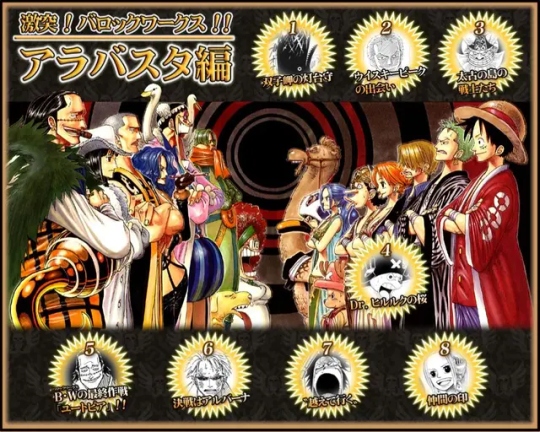
I've been making slow but steady progress and it's now time to take a look at the next saga in One Piece. As of writing this I'm about 150 episodes through the series so still a long ways to go but i've been enjoying my time with it so far. This saga was overall fun even if it took a bit longer to watch it then I would have liked. Part of that stems from having stalled on watching the Alabasta arc itself due to it being the first really long arc (like 40 episodes or so) but once I got through the early bit I binge the ending. This blog should be a lot shorter than the last one overall, but i'm saying this as I type it up so if this ends up being a novel again my bad.
Music
This section will be a lot shorter this time, not because the music got bad or anything but there wasn't a ton of new songs that really stood out. Stuff like Chopper's theme and Nico Robin's theme are good but most of the new songs didn't stick in my head like the songs introduced in the first saga. All of those songs are still here mind you, so what I liked before I still like now. Special shout out for them using We Are (OP1) as an in show song at points, kind of just becoming one piece's main theme. It's a pretty cool moment at the end of the Alabasta Arc and I'm always here for those kind of moments. As for Openings, OP2 sticks around for most of this saga and it's just fine. It did grow on me a bit but again visually it's unappealing and musically it's just ok.
youtube
We do get a new OP midway through the Alabasta Arc and.....uh well It's very very good but, we get it midway through the Alabasta Arc. Spoilers just a bit don't you think? It also spoils Nami's new weapon which is also silly. It doesn't bother me too much because I knew about this character already but imagine watching this when it aired, you would be like "WTF this villain joins the crew?"
But ignoring that aspect this OP is super sick, probably my favorite so far. We Are is a classic but not only is this one a bop, it's easily the most interesting visually. Also chopper is great in this OP so 10/10.
youtube
And for endings, nothing really stood out too much but special shout out to this one that features Chopper because best boy best boy best boy!
Arcs
Same as last time I'm not gonna be explaining what happens so if you haven't watched One Piece why are you reading this blog (hi Nina) sorry but I don't have the time to recap everything. I'm gonna try to not talk characters too much here except when applicable
Reverse Mountain Arc
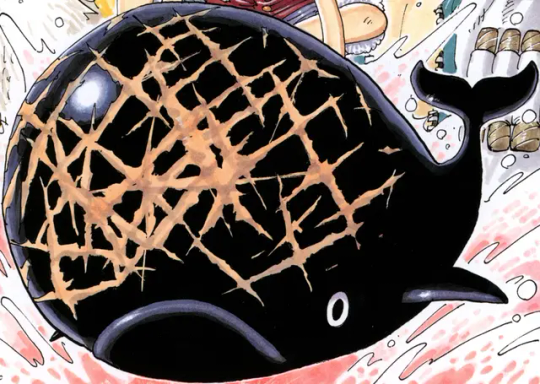
Clocking in at around two episodes, this is barely an arc but at the same time it absolutely deserves mention here because a lot of important stuff is in the Straw Hats entry to the Grand Line. Laboon is great and his entire back story (I hope we get a follow up on this in the future but I wouldn't push my luck) was the saddest back story ever told. Luffy's promise to come back and spar with him holds weight because if there is one thing you can say about Luffy, hes and idiot. But if there is two things you can say about Luffy he'll never give up on his dreams or promises. Crocus building an entire living space inside Laboon is silly fun that i've come to expect of One Piece, but I really hope he stops hitting his head, the poor boy doesn't need more scars. The Log Pose is a super interesting element that gets added here, as it explains why no one has found the one piece due to how weird navigation is in the Grand Line. Island hoping also explains why they need to stick around on islands so I really like this concept being added. I think the stuff with the agents is kind of weird, like I legit don't get why they were even introduced here, but I guess it was more to foreshadow that was coming up.
Whisky Peak Arc

Zoro finally gets to cut loose and it's amazing. Most of East Blue he spent injured or lacking swords but here? He gets to just clown on a bunch of lame bounty hunters and it's a delight to watch. Sadly what could have been a fun introduction to Baroque Works ends on a sour note, and it's all the editors fault. WHY WHY WHY WHY WHY WHY WHY WHY did you think having Luffy fight Zoro for literally no reason was a good idea? This one moment literally knocked Luffy down multiple points in my book because the guy who said "NAMI IS MY FRIEND" decided to instead be like "ZORO IS MY FRIEND.....Unless food." Like I get it to some extent, having two strong guys fight, fun idea but not at the expense of their characters. The editors demanding these two fight is easily the worst part of this arc, and while Zoro and Luffy ignoring the tough agents and their fighting accidentally knocking them out is funny, it's not worth the damage it does to Luffy's character. I know a lot of people cry "out of Character" at times when it's not deserved, but in this case it really is because Luffy wouldn't fight his friends like this. Beyond that, this arc is mostly a way to introduce the main villains of the saga, Baroque Works, a shady bounty hunting organization with weird names and weird people involved. As i'll get into during the character section, Vivi's introduction through this is a little weird and makes the whole thing feel a bit whip lashing in how fast it goes from just fighting bounty hunters trying to rob them to becoming an escort mission for a princess. It's not a big problem, just a little weird. Also Whisky Peak's cactus 'needles' being gravestones is pretty metal. It also literally has no impact on anything in this arc, nor does it really matter at all...but I thought it was cool.
Little Garden Arc
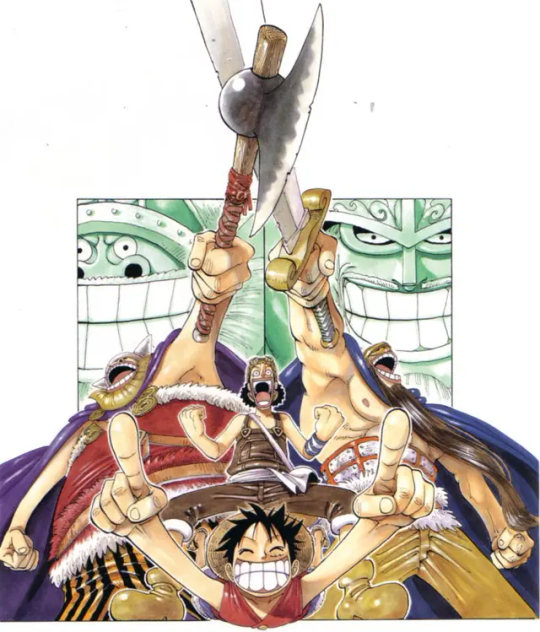
YAGAGAGAGAGAGAGAGAGAGAGAGAGAGA This arc is weird. It starts as just exploring a prehistoric island with funny Zoro and Sanji moments (I don't think Dinosaur Meat is good for you, and meeting with silly giants who have been fighting for a long long long long long time. But sadly the ending just ends up a bit drawn out. While Zoro's reaction to becoming a wax figure is hilarious, Mr. 3 gets old fast and him and the other guys stopping Luffy from saving his friends through delay tactics (Like the weird color mind control trick or the annoying explosion guy) just goes on for too long. I love Ussop getting a moment to save the crew, and Sanji tricking Mr. Zero into giving him information and him getting a eternal pose is pretty great. Mostly just the villians in this arc just go on too long. If Exploding snot man and Ground Pound Down girl weren't here I would have enjoyed it more, they really had no reason to come back. I guess because silly wax man wasn't that strong but IDK I don't think we needed to extend this arc as much as we did. The giants are great and this arc leading into the next is also great as well. I also like the VIvi starts to enjoy the crew more in this arc, since by the next one she already trusted the crew where as here she's still getting used to these guys who have decided to help her out. Also GOLD FISH REAL
BEST ARC BEST ARC BEST ARC Drum Island Arc

My Favorite arc of the Saga easily. As said in the first blog of this series, this is actually the first arc I watched. Having watched the stuff leading up and after it, it's interesting how this arc really leaves almost all of the Baroque works stuff out and just focused on the Drum Kingdom and Chopper's Back story. And Chopper's backstory, Saddest backstory ever told.
This arc is really just Chopper the arc, since most of the main cast doesn't do much this arc? Nami despite being sick arguably has the most relevance here due to being the one to learn about Chopper, and obviously Luffy defeats the main villain. But beyond that this arc is really all about Chopper and the kingdom he live in an I love that. Not Wario is a horrible person but he makes for a good villain in this arc. Luffy punching horrible people will never not be satisfying and seeing Not Waluigi fly off to hopefully never return is super satisfying. This arc also has some of the best side characters in the show so far with Dalton and Doctorine. It's not like I didn't care about Nami's home town or Ussop's rich friend but I really care about the Drum Kingdom and I really hope it improves in the future cause it's probably my favorite location thus far. The ending scene with the cherry blossom snow is also a fantastic way to end an arc. Also D is real and I really want to know what that's about.
The only things I don't really like is Luffy and Sanji wanting to eat chopper but that's like my only real nitpick. Other than that just a solid story and a nice breather before diving into the next big arc.
Alabasta Arc
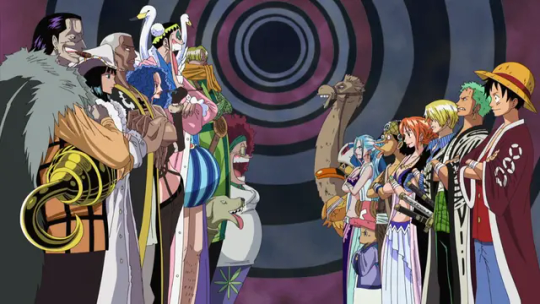
So I'm conflicted when it comes to this arc. The arc is basically divided in half, the first half being the introduction to the area and trying to prevent civil war and the second half is all of the big fights. The first half...is rough at points. Part of that is anime only additions extending the time it takes to get to the oasis town. I don't mind that to some extent because it makes Luffy's insistence to just got to Crocodile make even more sense. That said, it drags on a bit and everyone is fighting with each other because they hate sand. We do get more Ace which is nice but everything before Rain Dinners is ok but just a bit too long and drawn out. When we get to Crocodile's casino, stuff starts to get more interesting. Mr. 3 coming back is so stupid and I love it and everything about how they escape the casino. I like that Sanji being an unknown to Baroque actually pays off here, and Smoker continues to be the only good marine. The second half is much better. Luffy losing a fight is a good thing and makes his eventual victory much sweeter. Nami's fight is great but Ussop making it for parties kind of makes Ussop seem kind of like he doesn't get Nami's want to fight. Coupled that with how he acts during his an Chopper's fight with Moley Christmas and FOUR, Yea Ussop isn't going up in my favor yet. I do like the Chopper's fight overall, but mostly for how it ends and for chopper trying his best and wanting to do what he can. It's also probably the most interesting fight in terms of what actually happens. Zoro's fight with 1 is fine but not really for the fight itself and more for zoro's resolve in learning to cut steel (which he def already could do but I assumed that was in an anime only arc.) The actual fight is pretty straight forward. When your leader can zip around and do crazy rubber shenanigans, it makes a lot of other fights look more boring in comparison sadly. Sanji's fight....is whatever. Mr. 2 is great but the fight just consists of them kicking each other and then Sanji getting Brocked as 2 keeps using Nami's Face. Again like Ussop Sanji isn't really improving my opinion on him so far. Poor Vivi though. She tries her best here and it's heart breaking that no one is listening to her. Crocodile is up there with Arlong in how ruthless he is and when Luffy comes back it's a nice breather for the despair VIvi has been thrown into. The climb to the clock tower is fun, even if the ends result is a tragedy....or would be if ANYONE DIED IN THIS SHOW. Look IDK if I find this a major issue yet or not but if you think someone is dead, assume they will show back up. So many people should have died and then they just don't because.......yea. Also just a note, holy hell these mooks need a raise. Random guys with a Baroque works tattoo did way more to further the civil war than anything the number agents did. Make Generic grunt #105 a Number agent, he deserves it. But yea the ending to Alabasta is great, I love how the Marine's factor in and am curious how Sword Girl and Smoker will factor in to future story lines. Robin joining the crew is a little odd but I'm sure it won't be that odd the more we get to know her. Overall I enjoyed this arc but i do think it was a bit to long. Everyone getting their own fight a the end was awesome, but it just took a bit too long to get to the fighting.
Post Alabasta Arc
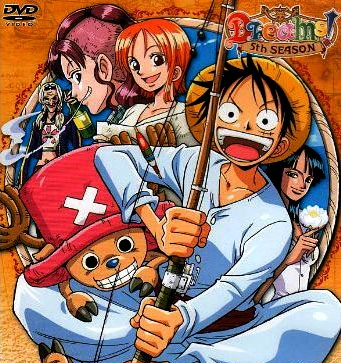
This is basically just a series of stand alone episodes revolving around one of the characters usually. I believe this is Anime only but I liked these a lot. A nice breather after the long arc that was Alabasta and a good way to further develop these characters. One issue I had with the Dragon Anime only arc in the last blog was that things happened but none of the characters were growing or effecting the plot really they were rather static. Here in these little vignettes you get each character to show what is good about each of them and also play off of each other is a delightful way. The Chopper episode is great cause we get to see more of him and his adoptive mother, as well as get more introduced to Robin. Robin at this point is kind of anomaly in the cast since she's the only crew member to invite herself. Getting to see her interact with Chopper was a good way to ease the viewer into accepting her as a crew member, so it was a good choice on the Anime's part. The next one I like but it's also weird. Rice Rice (he ate the Rice Rice Fruit) is weird, but really the odd salesman is only here as the preamble for a Nami map episode. I love when characters are in their element, and Nami getting to finally draw some maps is nice. Case and point, when Sanji gets to cook and not be weird around woman, he's very likable. His interaction with the young cook and subtly helping him make cury is again nice. Same deal with Ussop and the fire works people. It's also just a cute standalone story. Ussop is at his best when he's inventing or helping people not fighting, and this episode is the perfect one to highlight him at his best. And the Zoro episode is a flash back, to when he met the bounty hunting duo. Which is honestly pretty sick and you know me, I love me some more zoro. Luffy and Robin don't get episodes but they do get moments in the other characters episodes. Like I said, just a nice breather arc with good character moments. Unlike with the lead up to Alabasta that just drags because your anticipating a big fight, having these kind of slice of life episodes after a big fight is the best way to handle these anime only additions I feel.
Episodes not in Arcs
So I think the only thing to episode here is the two episodes about Koby and Helmeppo. They're fine, we get a look at Garp who I assume will be important later but who knows. These little vignette episodes of past characters are canon from my understanding, but after this one they dropped them because people didn't like them in the anime. But I think the issue is where they're used, and also because Buggy's episodes added nothing to the story. I would argue at least here I could see some of this stuff being important later but at the same time, watching them getting stronger and better at being marines is just whatever. But it's better than buggy at least.
Characters
So my plan here is to go over the new major recurring characters in their own section, give my thoughts on other character I really liked in small snippets and then also a general thought on the already existing cast and how my opinion on them has changed if it has.
BEST BOY BEST BOY BEST BOY Tony Tony Chopper
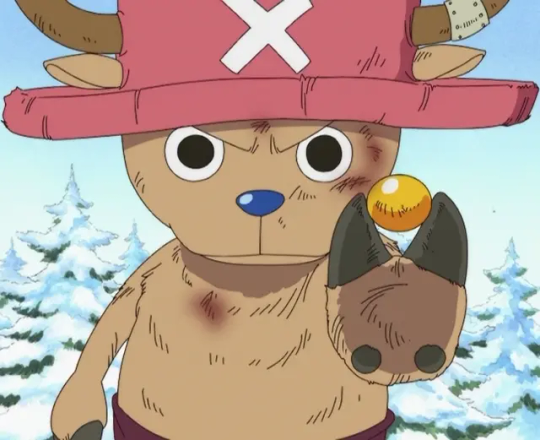
Chopper is my favorite bar none. Not only cause he's cute but he also has the saddest backstory ever. I also think he's the crew member at the moment who is the best at their job. Most of the crew didn't really join because of their skills, besides Nami and Sanji. Nami hasn't gotten a lot of time to shine as a navigator this arc due to the crazy nature of the Grand Line and getting used to it. Sanji goes out of his way to fuck with the male crew members food and that annoys me to no end. But Chopper will doctor anyone and is damn good at it. Some people apparently find chopper annoying, but he's a little kid who wants to be treated as an equal and not a monster and I sympathize with the little dude. He's one of the best parts of Alabasta cause he really wants to try his best to help his new crew. I love the little brother relationship he has with a lot of the crew and I look forward to seeing more of that as we go on.
Nefertari Vivi
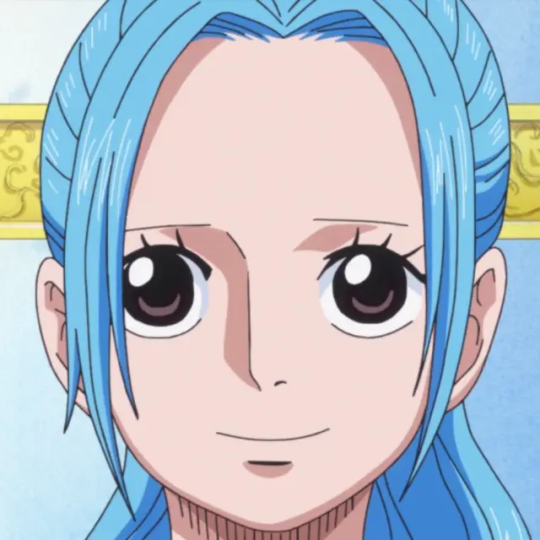
Vivi's introduction is weird. She's introduced as a weird agent named Mrs. Wednesday trying to eat Laboon. It's because she's undercover as a Baroque Works agent but IDK everything with Baroque works at this point just feels silly and over the top, it's not until after Whisky Peak that they start to feel like a threat. And because of this her posing as a silly agent before being revealed as a princess, just feels a little off at the time? Again it's a minor nit pick but like compared to Robin, who seems like the same person both as miss all Sunday and as Nico Robin, Vivi having two personalities just doesn't work for me. I guess you could argue that her and her body guard were doing it on purpose either because he thought you had to be that way to be a secret agent or because they were trying to hide their identities better but from the viewers perspective it just comes across as an odd reset. Regardless once we meet Vivi proper, she's nice. I like how in a lot of ways she's very much like Luffy in that she never gives up, but she also doesn't want anyone to get hurt except herself. I think this part of her character gets lost a little sadly due to the fact that the characters that are important in one piece are allergic to death. Like Luffy says people die and you can't protect everyone but....I mean who has died so far? Background characters that could be either dead or knocked out. It never really hits home that death is a real threat so Luffy making that be something she needs to come to terms with and that she needs to rely on others who are also willing to risk anything just loses a bit of it's punch. But I like her a lot, she kind of helped ground the crew for a bit, and I can't imagine we'll never see her again. As for when, who knows.
BEST DUCK BEST DUCK BEST DUCK Karoo

For what could just be a silly animal friend, Karoo is like my favorite part of Alabasta. This Duck really cares about Vivi and despite never talking you get exactly his state of mind when it comes to respecting the straw hats. His entire episode of protecting VIvi from Mr 2 is peak and is arguably the best 'fight' in that section. Also he's apart of the Super Sonic Duck Squad and that's just awesome. He's also a chocobo, you can't hate chocobos.
Portgas D. Ace
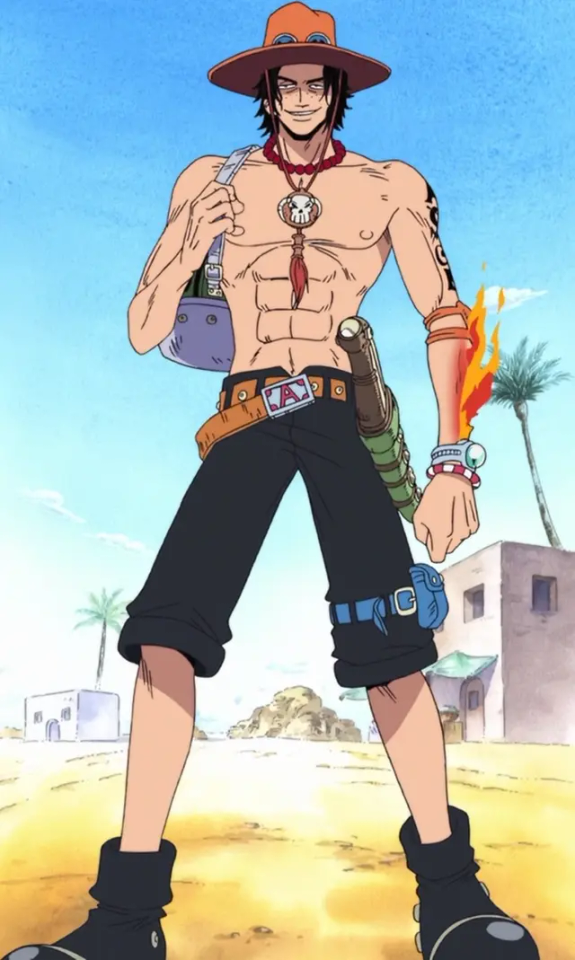
We don't get a lot of Ace (arguably more than in the Manga at this point) but I really like him a lot so far. He's a bit more grounded than Luffy but also he's absolutely Twoffy. The entire scene in the bar in the first town in Alabasta is hilarious. With him leaving Luffy that paper I'm sure we'll see him again.
Nico Robin
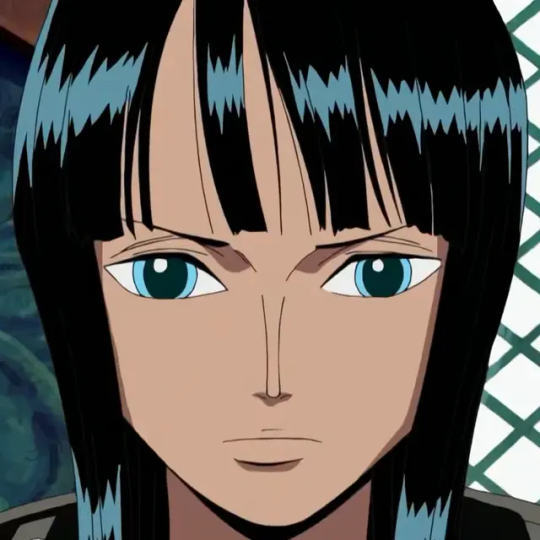
So uh, I'm probably gonna just need to do a new character section for her next time as well cause there really isn't much to say yet. She doesn't do much as Miss All Sunday besides having a mysterious backstory. From what i've seen of robin I like her but I also can't read her. I need to see more of her before being able to really get a read. In a lot of ways she's kind of similar to early Nami in that respect. Other Saga Characters
Ok gonna rapid fire this a bit. These are also only gonna be my favorite side characters or very notable villains. It doesn't mean I didn't like other characters they just didn't stand out as much as these guys. Also if I really hate someone they can also show up here. Mr. 5 and Miss Valentine suck so hard. They're such nothing characters but the way their portrayed is so obnoxious. I wanted to punch their faces so hard during the little garden arc. Mr. 3 like ways is a doof but unlike the other two, he's at least funny to watch and how they bring him back in Albasta is funny. Both of the giants are good fun, I love their silly laughs and look forward to eventually getting to Elbaf.
Dalton is such a good guy and I really hope he helps lead the former Drum Kingdom back to glory. His reaction to Hiriluk's death remains a highlight to me.
Dr. Kureha is amazing and I love her so much. She's hilarious in every scene she's in and she's a very good mother to chopper. Like wise ditto for Dr. Hiriluk, even if you have to add an element of sadness to his appearance due to obvious reasons.
Pell should have died. I like him but also he SHOULD HAVE DIED. Also he's a bird. King Cobra I like a lot, he's silly at points but I like his conversation with Robin in the tomb, he seems like a wise ruler overall. Mr. 2 is silly and I love them and really look forward to them not dying and coming back later in the show. The entire part at the end with them helping the Straw hats escape was great. FOUR HA HA HA HA
Guns can't eat Crocodile is Arlong 2. He's way more of a threat and takes Luffy way longer to deal with but he's sadistic as fuck. He's a good Saga villain and a good introduction to the kind of assholes we'll meet on the grand line. His over the top plan with like a billion back up plans was a bit much at points, it was almost like I was watching a Danganronpa Villain with how much despair her put Vivi through. Luffy punching him through layers of earth out into the sky to classical music is one of the best moments of that arc, his defeat was very cathartic.
The Old Guys Luffy sadly just does a lot of dumb shit and out of character shit this saga. He's great in drum kingdom and at the end of Albasta but i'm sorry the Whisky Peak moment really fucking sucks.
Zoro is more Zoro. He keeps being Zoro and that's awesome. Nami continues to become more and more one of my favorites. Her greed can be annoying at times but her relationship with Vivi, her part during the Drum Kingdom Arc and her fight with the Clima tech (weird weapon, but still cool) were all highlights and I hope she continues to use her smarts to win fights. Ussop was barely in this saga. He slept through whisky peak, got his moment in little garden and got to gush about giants, was barely relevant in Drum Kingdom, and then wasn't really important in Alabasta til his fight with Four and Mole. And he spent most of that fight running away. Overall Ussop will get good I'm sure, but his faults just keep popping out too often. Sanji needs to stop obsessing over women. He gets his cool moment with rescuing the crew from Crocodile but other then that most of his screen time this arc is spent being unfunny and girl crazy. SMOKER!!! We don't have many recurring side characters yet but Smoker comes back and he's so good. I really love this dude and how despite hating pirates he's also willing to change. He also doesn't put up with the World Government's bullshit so I've very excited to see more of him.
Crew Ranking
Chopper > Zoro > Nami > Robin > Luffy > Ussop > Sanji Luffy went way down due to how annoying he was in the desert and of course Whisky Peak. I'm sure he'll recover but he really only went under Nami for me. Robin is just in the middle right now because I don't really have an opinion on her yet, nor should I since she hasn't really done anything yet.
Final Thoughts
This saga is mostly good. The less interesting arcs are at least shorter than some of the East Blue arcs, and while early Alabasta is a bit much, it ends on a high note. Drum Kingdom is peak, and seeing the crew grow is very nice. I'm excited to see where the show goes from here, cause it can see it going up.
2 notes
·
View notes
Text

SeeYouSpaceCowboy - Coup De Grace
Nostalgia is often cyclical, as certain decades will become the aesthetic trend in the zeitgeist for a certain time, whether it was the 80s a decade ago, the 90s a few years ago, and the 00s now. That nostalgia doesn’t just include fashion, but it includes all facets of pop culture, especially music. A lot of 00s influences are being incorporated into all types of genres, especially metalcore. Over the past five years, a lot of younger bands are popping up that have been influenced by bands that came before them, especially when they grew up during the 00s and early 2010s. Many folks consider the 00s to be the crux of the metalcore scene, and a lot of bands getting big now are around my age (late 20s and early 30s) that listened to a lot of the “veterans,” so to speak. Some of these bands want to merely emulate that sound, but others want to deconstruct it and re-examine it. That’s what the band SeeYouSpaceCowboy does, especially on their new album, Coup De Grace, and it makes for one of the most interesting and visceral albums of the year.
Let’s back up a second, though, as there is some context to understand before going into this album. SeeYouSpaceCowboy dropped their debut album in 2019, after putting out a compilation EP beforehand that took their first couple of EPs and combined them together. They started off as a mathcore and metalcore band that was very rooted in the 00s, but their sound wasn’t anything I hadn’t heard before. It was done well, but it felt like it was trying to emulate that sound, versus do anything new with it. Since then, they’ve put out two albums, their debut in 2019, and their sophomore in 2021. I never reviewed either album, because I wasn’t writing about music at the time, but if I had to sum them up, I’d say they’re good albums, but short of great.
Their sophomore album, especially, really felt like they were just trying to sound like their influences, despite how they were adding some clean choruses and more melodic elements into the mix. It was interesting, so I was curious about where the band would go from there, because where can you go after making a couple of albums that are pretty generic (yet still quite good)? Turns out, you can go in a really cool direction, because Coup De Grace really surprised me by deconstructing a lot of sounds from the 00s, and doing something really cool with them. This album really sounds like it would have come out in the 00s, whether it’s due to the album cover itself, its myriad of sounds from the era, or its over the top concept that works insanely well.
This album is such a fascinating look at how you can try to both emulate your influences and re-examine them. I can’t blame someone if they listen to this, and think it copies a bunch of stuff from the 00s, because it kind of does. There are elements of metalcore, mathcore, post-hardcore, emo, pop-punk, and even some dance-punk from that era, and it all reminds me of something else, but it’s done so well that it doesn’t matter. That’s especially because SeeYouSpaceCowboy is still able to put their own spin on these ideas, and this still sounds like a SYSC record, regardless. They just want to show off more influences, especially melodic ones, and this album is a blast from start to finish. It’s one of my favorites of the year, and it really surprised me on my first listen.
I had no idea what to expect, but this album has a cool concept that is framed as a play with a jazzy and baroque introduction, interlude, and ending song that tells a loose story. This album is supposed to be less about personal struggles from vocalist Connie Sgarbossa, and more about characters, which is very 00s coded. It reminds me a lot of Panic! At The Disco’s A Fever You Can’t Sweat Out, but with more of a metalcore and post-hardcore sound. The lyrics on this thing are absolutely wonderful, but so is Sgarbossa. Her vocals are still just as great as they have been, whether it’s her brutal screams or those whiny yelps that she does, which were very common in the 00s. Guitarist Taylor Allen contributes a lot of clean vocals on this record, even more than on any other of their albums, but he sounds great. He even takes lead on a handful of songs, but the clean choruses on this album are so much fun, and never feel shoehorned in.
Musically, as I said beforehand, this album takes a lot of influences and distills them into a single package, but it’s a very off the wall, unpredictable, and insane album that switches up between every song (or sometimes within the same song). It never feels jarring, either, but it keeps you on your toes. I haven’t heard an album like this in a long time, maybe since The Callous Daoboys dropped their debut in 2019, because this album truly threw me for a loop, and it takes sounds I already really liked and re-examines them. If you want a really heavy, catchy, and unpredictable record that takes on a lot of sounds from the 00s, check out this new SeeYouSpacwCowboy album. It’s easily my favorite album of theirs, and one of my favorite albums of the year so far.
#seeyouspacecowboy#coup de grace#metalcore#metal#heavy metal#mathcore#post hardcore#pop punk#dance punk#pure noise records#courtney laplante
4 notes
·
View notes
Text
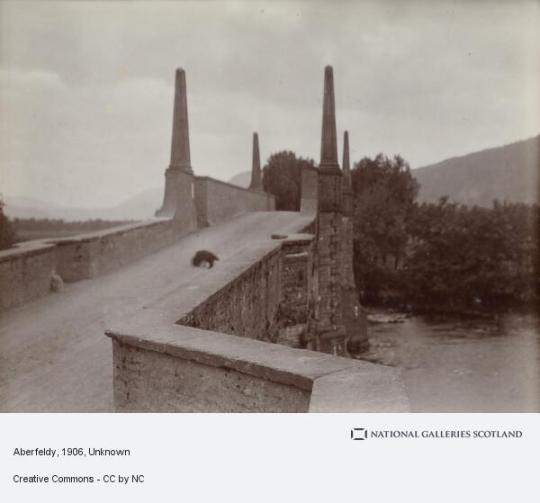
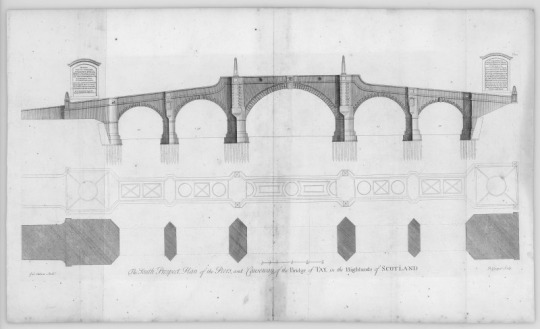
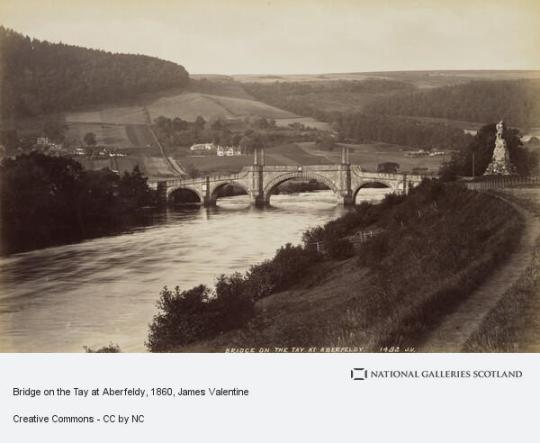
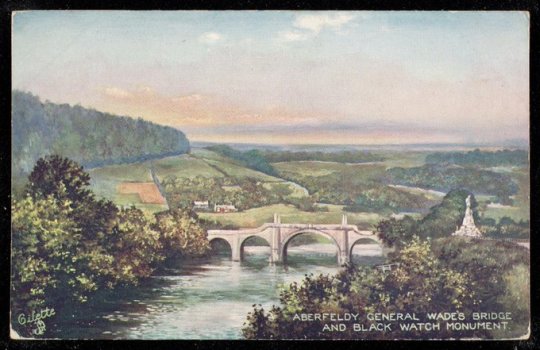

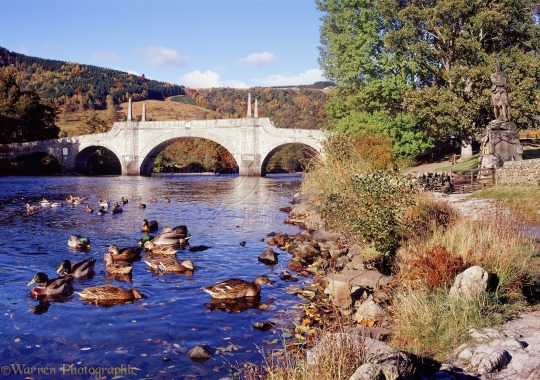
On April 23rd 1733 work began on the bridge over the River Tay at Aberfeldy with General Wade laying the foundation Stone.
Many people might not like the fact that Wade was in Scotland, but regardless of you opinion on him, many of you will have at some point travelled on a road, or crossed a bridge that was part of his work here in Scotland.
In 1925 Wade was charged with building a network of roads and bridges throughout the Scottish Highlands to aid the transport of men and equipment. The government was rightly concerned about the possibility of another Jacobite uprising following the '15, and wanted to make sure that military transport was as efficient as possible in case of another revolt.Over the next 15 years, Wade oversaw the building of 250 miles of roads - the first engineered roads in Britain since the departure of the Romans in the early 5th century. To link those roads he also built over 40 bridges.
The most impressive 'Wade bridge' spanned the River Tay at what is now Aberfeldy. At the time it was the only bridge across the Tay, allowing access to the central and eastern Highlands from the south. It is sometimes known as the Tay Bridge, although since the construction of the bridges at Dundee that name has gradually worn off, although I do know some Jacbites out there that will not call them Wades Bridge or Roads, the roads especially are called “Old Military Roads”
The humpbacked bridge was designed by the famous Scottish architect William Adam, father of Robert Adamwho went on to become perhaps the foremost country house architect in the country. General Wade considered the elder Adam 'the best architect in Scotland'.
Adam's design was much more than a purely functional piece of military architecture; he created a neo-classical five-arched bridge stretching 112m (368 feet), with a central span of 18.2m (60 feet). Adam added Baroque details, including four obelisks over the central span and decorative pyramids at each end. The central span also has a raised parapet. The roadway is 14 feet wide.
To ease the impact of water on the bridge piers there are triangular cutwaters. The arches are segmental, and the bridge is composed of grey chlorite schist with rubble spandrels and arch rings of dressed stone. The piers were supported by 1200 timber piles encased in with iron sunk into the river bed.
On the inner face of the parapet in the centre of the bridge is a dedication panel in Latin which translates as:
Admire this military road stretching on this
side and that 250 miles beyond the limits of the
Roman one, mocking moors and bogs, opened
up through rocks and over mountains, and, as
you see, crossing the indignant Tay. This
diffIcult work G. Wade, Commander-in-Chief of
the Forces in Scotland, accomplished by his own
skill and ten years labour of his soldiers in the
year of the Christian Era, 1733. Behold how
much avail the Royal auspices of George 2nd.
The exterior of the central arch bears another panel with relief carvings of a crown and crossed swords and the monogram of George II between them.
Stone was quarried at Farrowchil, a mile away. Skilled masons were brought from all across the north of England and they worked on finishing the blocks through the winter so that it could be quickly assembled in the summer. It was opened to traffic in October 1734, though the official opening ceremony did not take place until the summer of 1735.
The bridge cost a total of 4095 pounds (another source puts the cost at 3,596 pounds) and Wade considered it his finest achievement.
The building of Wade's Bridge was directly responsible for the town of Aberfeldy. At the time it was the only road bridge across the Tay, so it formed a vital link in transport routes. A settlement grew up near the east end of the bridge and in very short order grew to a considerable size.
Wade considered his network of roads and bridges an essential step in keeping peace in the turbulent Highlands. However, the only military commander to actually benefit directly was Bonnie Prince Charlie, whose Jacobite troops used the road network to their advantage during the '45 Uprising.
Bonnie Prince Charlie himself crossed the bridge in February 1746 on his retreat north after Derby. He stayed at Castle Menzies, just a mile away, for two days. Just two days after that a contingent of the Duke of Cumberland's soldiers followed him across the bridge. They would eventually catch up with the Prince and his men at the Culloden near Inverness, a battle that effectively ended Jacobite hopes.
Though many of General Wade's military roads are still in use today, the bridge in Aberfeldy is the only one of Wade's bridges still in daily use. Today it carries the B846 over the River Tay. It was not designed to carry two lanes of traffic so there are lights at each end to regulate traffic flow.
Although the bridge as a whole is impressive, the masonry is quite different from the smooth neatness of Telford’s or Smeaton’s later bridges – the outside is neater than the inside, but it’s still a quite different style.
23 notes
·
View notes
Photo

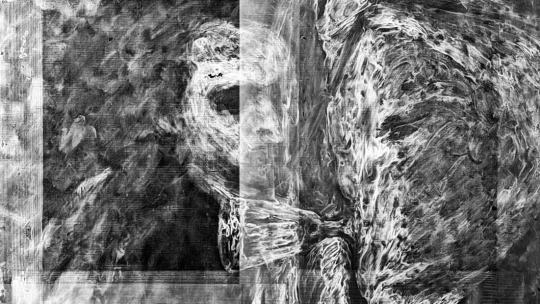


A 160-Year-Old Cézanne Painting Hid a Secret
Cincinnati Art Museum's chief conservator Serena Urry was conducting a routine inspection of the institution's prized Paul Cézanne painting "Still Life with Bread and Eggs" when she noticed something "odd."
For an artwork dating back to 1865, the appearance of small cracks was no surprise. But they were concentrated in two specific areas, rather than distributed evenly across the canvas. What's more, they revealed tiny flashes of white that stood out in contrast to the brooding palette of the French painter's so-called "dark" period.
"I thought there might be something underneath that we should look at," Urry said in a video interview.
The conservator asked a local medical company to bring a portable X-ray machine to the museum, where a technician scanned the 2.5-foot-wide oil painting in several parts. As Urry stitched the series of images together digitally using Photoshop, she saw "blotches of white" that indicated the presence of more white lead pigment.
"I was trying to figure out what the heck they were... then I just turned it (90 degrees)," she recalled. "I was all alone but I think I said 'wow' out loud." When the scan was rotated vertically, an image of a man emerged, his eyes, hairline and shoulders appearing as dark patches. Given the figure's body position, Urry and her museum colleagues believe it to be Cézanne himself.
"I think everyone's opinion is that it's a self-portrait ... He's posed in the way a self-portrait would be: in other words, he's looking at us, but his body is turned.
"If it were a portrait of someone other than himself, it would probably be full frontal," she added.
Should that be the case, it would be among the earliest recorded depictions of the painter, who was in his mid-20s when the still life was completed. Cézanne is known to have produced more than two dozen self-portraits, though almost all of them were completed after the 1860s and were largely executed in pencil.
"We are at the outset of the process of discovering as much as we can about the portrait," said Peter Jonathan Bell, the museum's curator of European paintings, sculpture and drawings, over email. "This will include collaborating with Cézanne experts around the world to identify the sitter, and undertaking further imaging and technical analysis to help us understand what the portrait would have looked like and how it was made.
"Stitched together, this information may add to our understanding of a formative moment in the early career of this great artist."
Unanswered questions
Part of the Cincinnati Art Museum's collection since 1955, "Still Life with Bread and Eggs" was painted in a realist style — inspired by the Spanish and Flemish Baroque periods — that Cézanne deployed early in his career. He later developed a more colorful aesthetic under the guidance of Impressionist painter Camille Pissarro, before spearheading the more structured style of the post-Impressionist movement.
In the mid-1860s, Cézanne was developing a new coarse painting technique, often using a palette knife to apply color. But whether his hidden portrait was an experiment gone wrong, or whether he simply reused an old canvas to save money, remains a matter of speculation.
Another possibility, Urry ventured, is that the painter suddenly felt inspired and "needed a canvas" — a theory supported by the fact that he appears not to have removed much paint before starting work.
"It's pretty clear that he didn't scrape it down," Urry explained.
Many other questions remain, including the colors Cézanne used and how complete his original portrait was. Museum experts hope to analyze the painting using advanced scanning processes like multispectral imaging, which might reveal the underlying brushwork by assessing textures invisible to the human eye. X-ray fluorescence spectroscopy, meanwhile, could reveal which chemical elements are present and, thus, what colored pigments were used by the artist.
"We're hoping to reach out to colleagues in the conservation and curatorial worlds to see if we can get access to other equipment," said Urry.
For now, however, the museum is looking forward to putting "Still Life with Bread and Eggs" back on display. Since making the discovery in May, Urry has cleaned the painting and thinned the varnish on its surface. It returns to public view, alongside an image of the X-ray, from Dec. 20.
Further scans and analysis could entail transporting the artwork to another institution, presenting logistical challenges and meaning visitors to the museum might miss out on a chance to see one of only two — or arguably, now, three — Cézannes in its collection. "You can't just pop it in your car and drive it to Chicago," Urry said.
"The portrait has been there since he painted it, and it's been there since (we acquired it in) 1955," she added, "so there's no rush."
By Oscar Holland.
#Cézanne#Cézanne 'Still Life with Bread and Eggs' 1865#A 160-Year-Old Cézanne Painting Hid a Secret#french artist#painter#painting#self portrait#hidden painting#art#artist#art work#art world#art news#long reads
29 notes
·
View notes
Note
i'm curious, how do you think the alabasta arc would have happened without vivi sailing with them, driving them towards their goal? i'm confused on what oda's plans were before she was finalized
I don’t know, and considering what Oda has said about how he writes it could very well be he didn’t really have a plan. The Alabasta saga is still pretty early on in One Piece’s serialization and he hasn’t tried his hand at a story that ambitious before.
Something to consider when thinking about One Piece is that the Seven Warlords of the Sea were not initially a thing. The series was only supposed to last for 5 years, and once the crew hit the Grand Line they were just supposed to go against the Emperors and that was that. If you go back and look, Mihawk was only ever labeled a Warlord *after* Baratie when Oda name-dropped Jinbe on the way to Arlong Park; before that he was just the Greatest Swordsman in the World. I personally think that he was retroactively added to the group when Oda decided having Seven Warlords around sounded like a cool idea and he needed to give the group some legitimacy.
So having made up Seven Warlords, Oda then had to find a place for them in the story when they never initially were meant to exist, and its choices like that that turn a 5 year story into a 25 year story. For the first years of serialization Crocodile was not someone who existed, and I doubt Alabasta was a place Oda had thought of.
So who knows! It could very well be that Oda thought having a mysterious group like Baroque Works sounded cool and he made the rest up as he went along, or it could be he made up the group knowing it would be headed by one of the Warlords because he had a group of seven really strong characters he now had to find a place for. Without Oda saying one way or the other, we will never know for sure.
55 notes
·
View notes
Text
Mémoire de la Mode - Yohji Yamamoto
by François Baudot (1997)
Those who wear my clothes try to assert a single opinion,” says Yohji Yamamoto. This essential way of thinking about fashion, which he has succinctly expressed for more than 20 years, sums up his own creative activity. In contrast to the extremely rich era of haute couture, the glorious side of prêt-à-porter, and the futurism of the avant-garde, Yamamoto, a Japanese man, asserts the strength and difference of Yamamoto's style in a small but decisive way by returning to clothing archetypes, choosing neutral expression, and employing a simplified palette and register. The return to traditional Japanese patterns and the use of a more neutral expression, a simplified palette and registers (designs), all of which gradually but definitively assert the strength and difference of the Japanese style. Examining the couture of Paris as well as the traditional Japanese garments, the silhouette of his work explores a whole new realm of fashion appearance and behavior. In this turbulent century, more has emerged than has been raised in a thousand vears of fashion issues.
The couturiers who had been at the height of their powers in the 1950s were forced to admit that in the decade that followed, the power of the designers was slowly being established. These designers contributed to the growth of the big brand manufacturers,
The first generation of "young creatives" was born. The style of the young creators, a necessity for the majority of Parisians, would later suffer from a regimentation of Italians who were transformed into better and better supporters.
Thus, from 1965 to 1985, many of the directions of couturiers and fashion creators in the bretaille were developed, loved, and organized. The focus, the baroque, the traditional exuberance, etc., were all confined to their own creations, which in the early 80's were documented by those who would be defined as "conceptualists". This expression of premillennialism is a new trend that emerged in the plastic arts between 1950 and 1970, in which ideas, qualities, and analysis of concepts and results took the place of the body of work through the artist's creative activity.
This is precisely the "opinion" that Yamamoto presents. The public art of dreaming is considered elusive, but it wants to approach the public from the outset, while focusing on the real.
Today's fashion follows artists whose work has not been consumed by the market economy for the last ten years or so, and minimalist artists are proud of their fame as somewhat distant successors to Marcel Duchamp. The monochrome paintings of Ad Reinhardt, the charcoal forms of Donald Judd, Sol LeWitt and Karl Andre, the ergonomics of everyday materials, the theatrical art of Janis Knellis, Mario Merz and Giulio Paolini, the so-called Arte Portuguera, are just a few of the artists who are represented. These variations of modern art are the most important examples of the modern art of the past. These variations of modern art tend to be all about integrating the everyday into the everyday life, to bring the short image back into its original role and to capture it from a new perspective, whether it is a block of paper, a torn poster or the neon lights of a metropolis.
Even if Yamamoto does not seek the status of a so-called artist, his later works show an unusual sensitivity to the currents of the times by not using an original approach to the body of art. It is the same as what the couturiers of the previous era showed against cubism, Russian ballet, or pop art. For example, Andy Warhol, in his hot tea in the 70's, uses the verbal expression "a department store is like a museum" and turns the expression upside down to "I like Rome, because it is a museum after all, like the department store in Bloomingdale’s".
Pulte Pozzella goes even further and uses the same primitive elements of this addition, such as scraps, shavings, starch, coal, etc., as the main ingredients of the original product. In the same way, amoto is one of the few who, in the turbulent thirties, reads a rupture with the traditional idea of "entertainment". Likewise, Yamamoto is one of the few who, in the turbulent thirties, reads of a disconnection from the traditional ideas of "entertainment". He is one of the few who reads a break with the traditional idea of "kogei", which until then had been considered fascinating!
In order to accept the bags, he redefined his own relationship with the male (or female) body, redefined the relationship between beauty and certainty, antiquity and the future, and memory and modernity in a way that has become a tradition in a context where most people have no separate understanding of the relationship between these things.
Black, "the silhouette of all silhouettes in the shadow of the ultimate plate," is the best weapon for questioning what we wear, as was the case with Chanel in the early part of this century. The collection is a true dress for shadows, encompassing the silhouettes of mystery, without house-cloths, anchors, or detailing. In the midst of a glorious body of beauty and a civilization that is unspoiled by any day, Yamamoto invented a new discipline: summiting. His originality has no national origins, no beginnings, and even the slightest pretension has been removed. In other words, "back to the core". This is his philosophy of hair persuasion.
His creations, which are the source of his ideas for means and costumes, represent the national trend toward the impractical idea of 1. In response to the definitive selection of the eponymous quality of "elegance," he transposed it into an environment that is recognized as beautiful and vernacular in our time. In its ascetic variations, Hara Shu's archaeological₴, or Sugata's style, continually reexamines itself, blurring the line between the ephemeral and the immutable. Thus, like all important events in the fashion world in the past, the "classic" is born.
The modern form of the dress is a secret, enduring elegance with contemporary significance.
The wealth of the world is maximized by the power of the mind.
His surname means "at the foot of the mountain". In 1943, he was born in Tokyo and grew up in a small town called Kogei.
He grew up in Japan, where his parents, both war widows, were the elders of the Imperial Japanese Navy. He grew up in Japan under the guidance of his father, a war widower, who was the head of the Northeast Asian Women's Association (NWA).
Without any certainty, he attempted to enter the elite society of Japan with the given discipline and purpose. However, he surprised his parents by finally deciding to return to their place. As a condition of working in the store, his parents wanted him to attend the famous cultural and artistic exhibitions. Although this was to help him learn the basics of the trade, it was a problematic, emotional, and busy few years for him. The only male student was Yamamoto, the highest paid student in the school.
The reason is that he was a student. The only thing that the remaining customers later asked for was a copy of Bali's latest model. But the hardest part of the evening was that whatever little money was made from it could be used for one's own production.
In 1UGU, Yamamoto enters a competition and receives a bariatric travel grant. He spent eight months in the heart of fashion without a single centimeter and without money. It was enougn to find work as a designer. He spoke no French, hardly spoke a word of the language, and made all kinds of tea instead. He was particularly interested in the bret-a-porter that was then emerging in Saint-Germain-des-Prés. He felt that he had become fascinated by this kind of artlessness.
After returning to Tokyo in 1972, he established the Y’s Company, which presented its first collection in Tokyo in 1977.
In 1981, he participated in a fashion show in Paris with Kawakubo. Later, in 1981, he and Kawakubo participated in a fashion show in Paris, which caused a sensation in Paris. At this time, the world's press was forced to decide where to go. The question was whether or not they would accept the change in fashion and fashion show format that had been working so well. While there was a lot of criticism about the show, there were also voices from the side of the fashion industry that were opposed to the show. The unknown artists were now in the limelight amongst the solder community.
The Liberation newspaper on the day of the show was titled "A leading role for Japanese in the French fashion world". Michel Claesol wrote: "The original surfaces that we will dye in 1982 will be worn for the next 20 years -
What Courrèges and Cartan proposed around 1200 as being applicable until the year 2000 AD is now as old as a Soviet science fiction movie. For a long time, French couturiers thought that couture, like science, was a way to right the wrongs of the past. But Japanese designers foreshadowed something when they wrote, "Japanese designers are preparing to make it possible for real families to quickly decide what clothes and accessories to wear when they have only 30 minutes before going out • • • •
This premonition was confirmed 15 years later when Yamamoto became a businessman as well as a creator. In 1981, he began to work on costumes, the cornerstone of conservatism, although he himself pronounced that he was not interested in money and had little of it. He was the first to take up the position of vice president of the company, and he was the first to be promoted to the position of president.
To accompany him, he thought he had to break the heavy connotation of the three-piece costume. As a result, he came up with a costume that was soft and dusky without escalating the extremes. The White shirts are an expression of neoclassicism without being harsh or authoritative.
Low folds, narrow shoulders, three-button jackets, pants that bend at the hem and narrow at the knee over well-polished shoes - all have had a decisive influence on the male silhouette for more than a decade. But he has the skill to weave in the constancy of the waterway, to put many men at ease who do not want to feel like victims of the mode. In a recent film set in Germany during the period between the two world wars, a dressmaker is accused of artificiality and of being "a man of the world".
The actors are dressed in Yamamoto style without making anyone feel "retro".
If fashion is about clothing, it is not essential. But if fashion is to feel our daily life, it is not indispensable. Painting, crimping, and other art forms,
There are very few things that can directly influence people, such as fashion and music, which are inexpensive. Fashion is the essential and only communication about the sensations of a generation of people who wear what they want to wear.
Yamamoto is the most philosophical of fashion creators. The wildest of the wild rivers. But perhaps he is the most disillusioned of all.
Making clothes is about people. I always want to meet and talk with people. That's what interests me the most. What do they do? What do they think about? What kind of life do they lead? After thinking about these things, I get to work. I start with the fabric, the material, and the "touch" of the fabric, then the form. Touch is the most important place for me. Once I get into the material, I am obsessed with the material becoming form," he functions. All of Yohji Yamamoto's garments start from two points on the chain. From there, the fabric flows down in the best possible way and the material remains alive.
When he quietly entered the over-accessorized, organized, and glitzy world of Parisian prêt-à-porter in the 1980s, Yamamoto's designs were plump. At the time, Yamamoto's designs were plump as he quietly entered the world of Parisian prêt-à-porter in the 1980s. The fabrics he incorporated into his details were so close to the body that they never touched it. His clothes were generally thick, translucent, and dark in color, sometimes without embellishment.
The medieval simplicity is accompanied by an "old-fashioned" effect. The simplicity of the Middle Ages is accompanied by a "worn-out" effect, which some have labeled "afterpunk" (grunge did not exist then). The passing of time is etched and the matted accessories are familiar.
This aversion to novelty can already be seen in the British dandies. They would intentionally make their boots look old, or allow their servants to wear their "camel's fur" for a year or two before wearing it themselves.
The extremely large capes, misshapen cloaks, and unrealistic symmetrical jackets are all the result of the creator Yamamoto's dream: "My dream is to design time. Symmetry, the symbol of perfection, lacks something human.
He confides in Wim Wenders, who entrusted him with a feature film. The scissors and the fabric reverse man prefers to base his work on something truly human. Therein lies his point of departure. For example, the authorship of the clothes worn by hundreds of unknown models.
During both World Wars, he was the model for the photographer August Sander, a worker of the most German men and women. The bungalows, the salovettes, the fishermen workers. The world of the photographer's own world is also engraved in the crosswalker's layered attire all the way down to the soles of his shoes.
The clothes that suit the person wearing them disappear before the personality of the person who chose them. Yamamoto is : "Whether a season's fashions are White or White
White is not the responsibility of the creators, but the responsibility of those who see and buy them. Where is the Japanese touch? World citizen Yamamoto admits to having discovered his own style by examining the history of fashion, especially couture. As for his appearance as a native of Japan, he says, "Japanese influence? I don't care a bit about that. The creator, one of the country's most talented people, criticizes his own country as well as a systemic fixation that is sometimes unappealingly heavy-handed: "I happen to be a Japanese student. I happen to be born in Japan," he says. I was born in Japan by chance, but I have never felt that I have taken advantage of that label. But it is hard not to see the influence of tradition in the subtlety of the fabrics that Yamamoto wears on his body, in the timelessness or vulgarity of his style, and in the shamefulness of his models. Imagination, stillness, and even abstraction become the web of the kimono and the wool of the fur, the fabric of Yamamoto's weave. The imbalance between the wild and the refined, between natural materials and technological products, between the land of the senses and the land of the emotions, is astonishingly calculated. This is why the world is attracted to the Far East. All of these refined values can be found, without the slightest pretension, in the work of Yamamoto himself and in his daily work as a consummate designer.
He is the longest-serving designer of men's and women's looks at the end of the century, expressing the uncertainties, anguish, contradictions, and passions of the time. The same goes for the value of maturity. It is a somewhat forgotten value of the glorious thirties, but one that will endure long into the future.
for pictures, see @archive-pdf’s scan of the book.
14 notes
·
View notes
Text
Aaaaand I’m done.
Okay. I’ll say that I liked this the best out of all the Bridgerton offerings so far: it made a genuine attempt to engage with the absolute nonsense Romancelandia setting rules already established in this universe and turn them into something cohesive. It almost works.
Everyone had real problems (except for Violet, who was just sort of…there) that weren’t things that could just be resolved if they would just talk out a stupid misunderstanding. Charlotte and George’s romance is genuinely unusual and quite touching, especially in its later stages. Lady Danbury as the fantasy version of an unhappily married woman turned wealthy independent widow is delightful. I like that they didn’t (by romance standards) sugarcoat the level of control a woman’s relatives and husband had over her life, or how precarious life without a good protector was. Some of the ways in which this was spelled out to the female characters (and thus, the audience) was a bit clumsy — this is their native culture, after all. They can and certainly should react to it in a variety of ways, but surprise at the degree of legal confinement they’re subject to comes across as stupidity, often.
Some of the costumes were hideous, some were great. Late baroque suits the brocade and ruffles bullshit of the Bridgerton Style Guide much better than the regency does. No one knows what to do with hats, but I really enjoyed the ladies in tricorns we got. (I love a good tricorn.) And there were some beautiful bergeres, which are another fave of mine.
It offers a cohesive explanation for why Charlotte is dressed in styles from twenty years ago, because she’s emotionally arrested in that era. It doesn’t make me forgive the lack of regency court dress in the Bridgerton-family centric seasons, because I desperately want to see that on screen. I actually think it could work. I know everyone hated it and the fashion plates of the era look a bit silly, but the silhouette is not dissimilar to a hanbok, if you squint? It could be done. And I bet those dresses could even be reworked to be regular going out dresses. If the panniers only added width to the sides, all you’d really have to do is re-sew the side seams into straight lines.
Violet should have been cut from this, frankly. George needed more screen time outside of Charlotte and his never ending leeches and ice baths. He’s an interesting character and the actors who played him were both genuinely good. We needed more sane George, because mad George is necessarily shown at an emotional remove from his thoughts and emotions. I’m not sure if having him be unstable so early was decided as a plan to explain away why Prinny isn’t a character in the main series and why Charlotte is so very prominent as the effective regent.
Also, we could have done with less horrible sex scenes between the Danburys. Once or twice, fine, but the rest could be easily telegraphed through Agatha’s post-rape bath and bitch sessions.
Um. I loved Reynolds, as I’ve said, and I’m sorry we didn’t get mature Reynolds in George’s household. I liked the variety of relationships shown. I don’t love how cold mature Charlotte is towards Brimsley — it seems horrible and disconnected from their early friendship. I don’t appreciate the way the narrative role Brimsley and Reynolds played necessarily cut out the existence and importance of ladies in waiting (and courtiers more generally). That annoys me, in a show that so heavily centres the lives of women. Lady Danbury’s relationship with Coral was good, though.
Edit: oh, and the timeline and travel distances involved made absolutely no sense at all. They all have magical tardis carriages. I nearly lost my mind when Reynolds complained about ‘riding all the way here’ when Brimsley had been using that same route as the walk for a small puppy every day. And, of course, the whole invitations for a royal wedding that starts in three hours thing.
Anyway. Scream away at me if you have thoughts.
9 notes
·
View notes